TRENDS HOW, WHERE, WHAT WILL WE EAT

VINITALY
VERTICAL. AMARONE BERTANI
CHEF. MORELLI E ZILLO
TRAVEL. POLINESIA


VINITALY
VERTICAL. AMARONE BERTANI
CHEF. MORELLI E ZILLO
TRAVEL. POLINESIA
Editorial. Omakase. News

The Wine to Buy Seasonal Cocktail
Vinitaly: business and internationalisation
The city of Verona opens to the larger public
Cape Town, the doorway to the African Continent Worldtour. Beacons on Scandinavia
Tre Bicchieri Us Tour: The Super Bowl Of Italian Wine
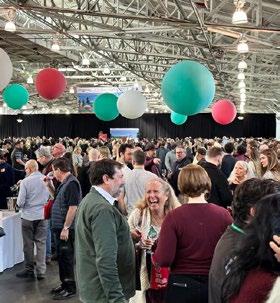
Prowein. A chiaroscuro edition. Ask No.1 Sommelier In Japan, How To Pair Wine With Japanese Cuisine
What, how and where will we eat? dishes, dining formats and buzzwords across 20 trends that look to the future

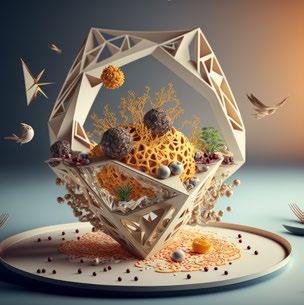



The long history of Amarone and its evolution. Bertani
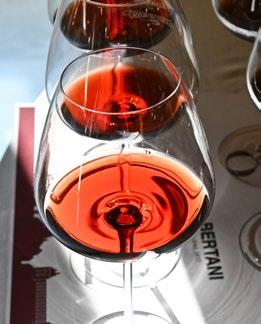
French Polynesia dreamy islands and ocean, a sensory experience unlike any other
Chef: Giancarlo Morelli
An important investigative TV programme recently conducted an indepth analysis of the world of chefs. The approach – as often happens in these contexts – was very critical of both cooking professionals and an international guide that publishes ratings and reviews of (in this case) Italian restaurants. It is not in Gambero Rosso fashion to go into polemics either with professional operators or with particular cooking styles or, even less, with our prestigious competitors. In fact, we believe that the world of food and wine deserves attention, continuous and in-depth reflection that highlights the positive aspects and consequently places the defective ones in a critical shadow. We have therefore decided to dedicate this issue of the monthly Gambero Rosso to the trends and the many transformations taking place in the food and wine world. We wondered what, how and where we will eat in the near future. And somehow we have made the Omakase formula our own – I trust you but I also entrust myself to you – to which we have dedicated an in-depth analysis on the Italian front: beyond the translation, the Japanese term Omakase indicates a style of dining and a way of eating that was born in the East but which gradually extends to different (if not all) forms of culinary offer, which are marked by creativity or which focus more on the ability to find lesser-known or excellent quality ingredients. By choosing an Omakase course, patrons rely on the care and choices of the chef. And this happens, and actually has been happening for some time, both with tasting menus and with the format of the traditional dish of the day. The Omakase style explicitly takes up this dimension of trusting the chef for the success and experience of lunch and dinner. The further reflection that was triggered in the editorial office - simple but we believe effective - consists in the fact that you too, the readers, dedicate your time to this magazine and entrust yourself to our care and our editorial menu. We therefore hope to make it always intriguing and tasty, and to whet your imagination and your curiosity.


The colomba cake designed for Easter 2023 by one of the most acclaimed bakers, Marco De Vivo , is light, fluffy and above all lactose-free. Revisiting in a lactose-free key the famous apricot colomba (with Pellecchiella del Vesuvio) and almonds with the addition of pieces of chocolate, was created to satisfy the need to make available the delight of enjoy colomba even for the lactose intolerant.
From the encounter between the delight of the Neapolitan dessert par excellence - the wheat pastiera - and the softness, portability and taste of a great leavened product, voilà the “Pastiera Lievitata 36 ore” by master Alfonso Pepe . A dessert, made with the ingredients of the traditional Neapolitan past iera and the help of sourdough starter.
The always eagerly awaited collec tion of Easter eggs designed by the Roman eclectic pastry artist, Walter Musco, this year focuses on contemporary art created by living artists such as Yayoi Kusama, Cattelan, Hirst and Banksy (in the photo an egg inspired by Yayoi Kusama).

The most beautiful thing about an Italian style chocolate egg is, generally, discovering its surprise, but in the case of the Ovettone the sur-
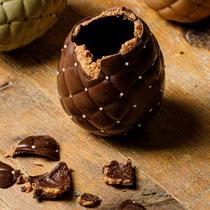
prise is already in the outer shell: in fact, it hides a delicious and fragrant layer of panettone, created, ça va sans dire, by internationally acclaimed baker Vincenzo Tiri



It is a very special leavened product, proposed in collaboration with WOW NATURE, designed for the upcoming Easter celebrations by Lucca Cantarin of Pasticceria Marisa in San Giorgio delle Pertiche. Inside the box of the milk chocolate and salted caramel colomba cake there is a postcard associated with a tree. Just frame the QR-CODE and choose the tree whose growth you can then follow.
6 The secret is in the sea
Sea water is the secret ingredient of the colomba cake offered by the Antica Forneria Molettieri in Naples. «I noticed that a sourdough starter initiated with sea water has a different fermentation process,» explains baker Rodolfo Molettieri . The addition of sea water allows for a more rapid fermentation of the leavened products, as well as giving a unique… salty note..
7 Latest news from Zabateca sabauda
The best ingredients characterise the Zabà, a delicious zabajone in jars created by Casa Marchetti . Only eggs from freerange hens and Italian sugar give their best in the sweet symbol of the Piedmontese tradition. In addition to the classic version, the bundle that contains four tasting jars allows you to try new variations, such as the one to which a Vermouth Torinese doc, a vintage Marsala or Teo Musso’s Beermouth have been added.
 – Valeria Maffei
– Valeria Maffei
Prosecco is the best-selling prod uct in modern Italian distribu tion. According to data from Circana (which compared to previous years has aggregat ed the two categories of wines and sparkling wines), the Vene to-Friuli PDO is worth over 328 million euros, with 46.8 million li tres and an average price per litre of 5.30 euro, which grew by more than 9%. At a distance (see table 2), fol low Chianti (–8.4% at 17.6 million/litres) and Lambrus co (–9.4% at 17 million/litres).


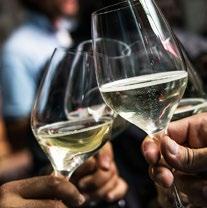
The former sees its sales increase by 7.5% in quantity (10.5 million/litres) and by 6.5% in value (50.9 million/euro) and is the only product in the top 15 whose average price per litre (3.61%) has fallen (–0.9%), in a context of general increase in consumer prices. Vermentino (Sardinia, Tuscany, Liguria), which rose by 6.4% in volume (10.1 million/litres) and by almost 10% in value (69.3 million euros), taking third place in the business of modern Italian distribution. Among red wines, Bonarda, Nero d’Avola but also Lambrusco, Primiti vo and Sangiovese are the most penalised. The perfor mance of Negroamaro was positive in terms of value: 5.5 million litres were sold for 24.7 million euros (+1.1%). consolidate their driving role in favour of the whole sector in a period certainly less brilliant for still wines.
Ribolla wine is emerging in the Dm in 2022 (table 3). In the special ranking that brings together the products with the highest growth rates, in terms of value, the characteristic wine of Friuli Venezia-Giulia recorded an increase of 12.2% followed by Müller Thurgau (Trentino-Alto Adige) with +10% and by Vermentino (Sardinia, Liguria, Tuscany) with +9.9%. Fourth place goes to Grillo (Sicily), up by 5.4%. The Circana numbers for Vinitaly also underline good ranking for Vernaccia (Tuscany) with +3.3%, Orvieto (Umbria, Lazio) with +3.1% and Nebbiolo (Piedmont, Lombardy) which grew by 2.2%. Finally, the variations in volume among the emerging wines confirm Ribolla, Müller Thurgau and Vermentino in the top three positions.
With almost 103 million bottles, Asti spumante and Moscato d’Asti Docg are satisfied with the trend in 2022. Production (State labels delivered by the protection consortium) reached 102.7 million bottles, a slight increase of 0.5%, with a +22% compared to the pre-Covid period. For Spumante, which marks a +11% to 67 million bottles,
this is the best result since 2013. For Moscato d’Asti, 2022 meant a slowdown of 14% to 36 million bottles, mainly for the decline in the USA (which is worth almost half of exports) after a record 2021. Lorenzo Barbero, President of the consortium, is satisfied above all for the sparkling wine which continues its positive progression. For Moscato d Asti, it is a “physiological setback but considering the averages of the last 5 years, the figure is perfectly in line.” 90% of the total production is sold abroad. Looking at the markets of the two types, Asti Spumante closes 2022 with almost 18 million bottles destined for Russia (+42%). Followed by Italy (+11%) with 7.1 million pieces, and the United Kingdom. Demand is down in the USA, as well as in Germany. Poland is growing significantly. Recent Istat data portray Asti Spumante exports closed 2022 with +16.2% in value (168 million euros) and +8.3% in volume. The almost halving of Germany (–47%), the Consortium says, was offset by the triple-digit growth of many emerging markets: Austria, Poland, Hungary, Central and South America (almost 70% more). Moscato d’Asti suffers from the USA contraction (–16%), which accounts for almost the entire decline in 2022. The other markets were stable: Italy, South Korea, Greece. The white moscato grape, which gives rise to the DOCG Asti spumante and Moscato d’Asti, is grown in 51 municipalities in the provinces of Alessandria, Asti and Cuneo. The Consortium brings together 1,013 wineries (50 sparkling wineries, 778 farms, 153 wineries, 17 winemakers and 15 cooperative cellars).

The team of brands gathered in the Vermouth di Torino Consortium is definitely expanding, a reality born in 2019 to protect and enhance this historic wine-based product, a protagonist in the world of aperitifs and mixology, the only one of its kind to boast European PGI brand, thanks to guidelines approved in 2017 by Mipaaf.

Members are now 34, thanks to six new entries: Antica casa vinicola Scarpa, Bosca-Cora, Distilleria F.lli Revel Chion, Isolabella della Croce, Mancino Vermouth and Opificio Gaio – Karminia. It is the signal of a good performance of the market. Since 2018, Vermouth di Torino has recorded positive trends. In the five years up to the beginning of 2023, volumes have more than doubled, reaching 4.4 million litres, with an average annual increase of 23%. The members of the Consortium today sell it in over 80 foreign markets.
In addition to the appointments scheduled for Vinitaly, from June 26th, there is anticipation for the return of Vermouth Week in Turin, in many venues throughout Italy and around the world. Food and wine initiatives plan to allow discovering white, rosé, red, amber, dry and extra dry types. There are also various promotional activities planned in the USA, Canada and the UK.

“A

Matelica (Macerata)
www.bisci.it

average retail price: 24 euros
By now it’s common to find the name Bisci mentioned when it comes to the best expressions of Verdicchio di Matelica. Their reliability is guaranteed by first-rate vineyards scattered among the slopes of Monte San Vicino, between Matelica and, to a lesser extent, Cerreto d’Esi. But Aroldo Bellelli and Mauro Bisci have also endowed their wines with a precise profile: taut, mineral, characterized by vital energy but at the same time capable of myriad nuances that gradually emerge with the passage of time. The ageability of these whites is undeniably a strength. Maturation of all their fresh whites and reds is carried out in fibreglass-lined concrete vats and stainless steel drums. Our wine to buy is the stellar Vigneto Fogliano 2019. Expressive vitality, pervasive elegance and territorial inspiration characterize this version, a wine that will leave you stupefied: a refined aromatic sweet is wrought of notes of orange peel, almond and a stony minerality that’s already in the making; the palate is taut, rhythmic, finishing vibrant and deep. It’s elegant, layered, complex: this is a pure hidden gem from the Marche region. The finish realeases a kaleidoscope of lingering juicy and brackish sensations. We cant’ wait to check this wine within the next 15 years. Pairings? We would suggest to mach it with a fried and meaty red mullet.
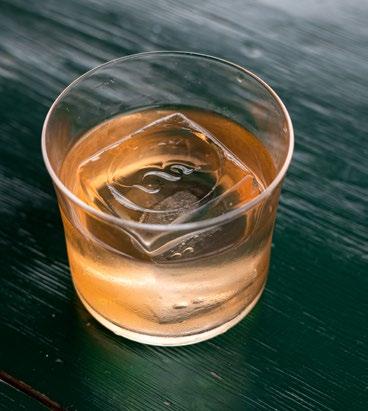
3,5
1,5 cl Crème de Poire Williams Merlet
2 dashes Absinthe Blanche
2 dashes Soluzione salina
«A“low ABV” drink that comes from the search for less conventional products, using Umeshu as the predominant ingredient, which gives structure and texture. Sake adds complexity and Merlet pear liqueur, a very dear manufacturer, sweetens the drink by balancing and smoothing the acidity of the two fermented products. The addition of Absinthe refreshes the palate and finally the salt
fundamental


is an activator that increases the gustatory and aromatic profile of the whole.»
BARTENDER : Native of Romagna, born in 1995, Marco Maria Dell'Accio fell in love with bartending at the age of 18. While studying oenology he worked in an Irish pub to pay for his studies, until his love for work won and he dropped out of university focussing completely on mixology. He worked mainly on the Riviera, with some experience abroad, until he landed at Maré in Cesenatico, where he decided to put down roots. In the 6 years of his residency he started as a bar-back until he reached the role of Bar Manager, overseeing service and directing the full-time bar team. The company has recently grown, opening a restaurant with the same imprint as the Cesenatico branch on the Naviglio Grande, in Milan, to which Marco is dedicated fully, curating the cocktail list and the growth of the new team.
 Marco Maria Dell’Accio, Maré - c afe, kitchen, beach, food shop, Cesenatico ( FC )
COCKTAIL
Marco Maria Dell’Accio, Maré - c afe, kitchen, beach, food shop, Cesenatico ( FC )
COCKTAIL
La denominazione Alto Adige DOC è relativa a un piccolo territorio dove convivono elementi diversi che, in questa terra, riescono ad accordarsi in un’unica armonia. Vigneti baciati dal sole mediterraneo e cresciuti nel territorio alpino; tradizionale raccolta a mano e vinificazione operata da vignaioli esperti e apprezzati in tutto il mondo. Tutto questo sono i vini Alto Adige DOC.
www.vinialtoadige.com


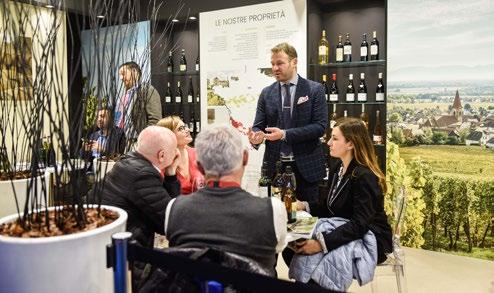
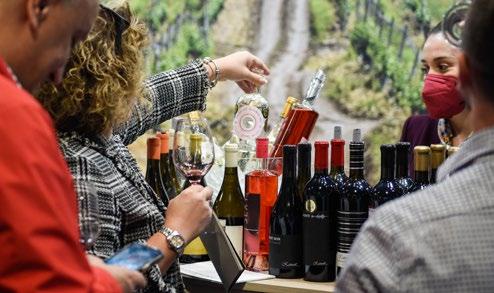
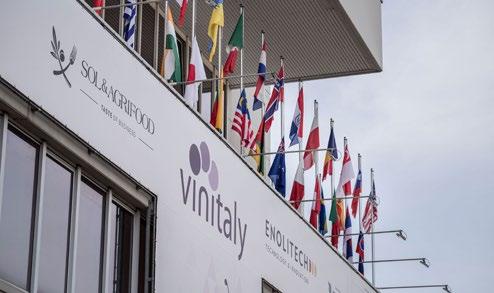
According to science, 55 is the age of optimism. Indeed, there is a lot of optimism at Veronafiere for the next edition of Vinitaly: the 55th, as a matter of fact, held in Verona from April 2 to 5. An optimism justified by many factors. Firstlyl, having passed the Covid hurdle, remaining a central appointment in the global wine calendar. Then, the wait for a fully international edition with no limitations on arrivals from abroad and above all consolidating buyer loyalty over
the years. Finally, the debut of the new government structure: Federico Bricolo , the new President, no general manager and more powers given to the figure of the managing director, Maurizio Danese . To quote him, «this will be a lighter, smarter and more effective international exhibition of wines and spirits.»
Within the convention perimeter, spotlights will be on business, according to the strengthening of that model, which has been de -
sired for some time, which aims to increasingly distinguish the spaces dedicated to insiders from those designed for the general public of enthusiasts. For professionals, it was thought to enhance b2b interaction between companies and buyers in an innovative way, as well as strengthening the “Taste and Buy” format with specialised operators identified by the convention network in collaboration with companies. The “Vinitaly Plus” digital platform is also moving in this direction for the consolidation of commercial
relationships throughout the year, as well as for the creation of a calendar of meetings during the days of the event. There will also be a focus on the latest trends. In this regard, among the proposals present in the 16 exhibition pavilions (all sold-out), there will be: an area dedicated to the ‘fourth colour of wine’ with the Orange Wine phenomenon, the section reserved for limited edition niche productions of the highest quality, MicroMegaWines –Micro Size, Mega Quality, the Organic Hall which implements the Vinitaly Bio offer, and the space reserved for the art of cocktails Mixology.

For the general public of enthusiasts, the “party” will begin a few days earlier with what has now become to all intents and purposes a real “off-show”: Vinitaly and the City , on stage from March 31st to April 3rd. From the Mercato Vecchio courtyard to the Cortile del Tribunale passing through Piazza dei Signori with the loggia of Fra Giocondo, the ancient loggia and the Lamberti tower, the hall dedicated to wine lovers meets in the historic centre of Verona with cultural events, presentations, master classes, installations, tastings, performances and guided tours in the streets of the city. Meanwhile, to immerse ourselves even more in the atmosphere of Vinitaly, we asked CEO Maurizio Danese to reveal a few more details of this year’s edition.
È CEO Maurizio Danese explains the new course of Vinitaly, one of the international conventions dedicated to the nectar of Bacchus and to the most important spirits in the world. We talked to him about the future and the prospects of a sector that has emerged with momentum from the years of pandemic crisis.
What should we expect from this year’s Vinitaly, the first with the new governance of Veronafiere?


We have launched an important renewal process of our Vinitaly convention, both in Italy and abroad, with the aim of further increasing the positioning of the brand within the next two years. We are working on a very clear bisector, based on discussions with operators, exhibitors and, obviously, Veronafiere’s new business model. We are absolutely aware of the central role of Vinitaly in the promotion and internationalisation of the sector. For this reason - also thanks to the roadshow that has just ended - this year we have activated an unprecedented marketing campaign: to promote awareness of Italian wine, to consolidate relations with buyers and to strengthen incoming in the medium term. Business and internationalisation are the keywords, to be achieved not only with b2b but also through an improvement of online and offline services, starting with logistics. Using three adjectives, I’m imagining a lighter, smarter and more effective Vinitaly.

Vinitaly: business e internazionalizzazione
E Verona città si apre al grande pubblico
After last year’s return, with still some restrictions on foreign countries, will this be a fully international Vinitaly again? Not that last year wasn’t, after the two-year hiatus. Let me remind you that despite the “physiological” absence of China and Russia in particular, the incidence of foreign operators in relation to entries was among the highest ever recorded. This year we have considerably increased the foreign budget and we expect to have about 40% more top buyers than in 2022. China will make a great comeback, which after the lockdowns is ready to regain its status as an emerging giant. With our offices in Shanghai and the joint venture based in Shenzhen, in coordination with Verona and the Ice network, we are selecting the main operators on the China market: ranging from top-level groups in HoReCa, such as the Bottega Group, Ensue, Vino Bento and Wine Universe; to the top 20 national importers in terms of volume and value such as Cws, Interpocrom and Asc, to e-commerce platforms such as Lady Penguin and Vinehoo. A task force that is working on over 100 highly qualified Chinese buyers. The quantitative evolution of foreign demand will obviously concern all the main outlets and emerging markets, starting from the United States and Canada to South Korea passing through the Old Continent up to South America.
After such a destabilising three-year period, between Covid, war and inflation, what are exhibitors asking today at an important trade fair like Vinitaly?
We are aware that collective listening is the basis of common growth, because Vinitaly does not belong only to Veronafiere but a heritage to be shared with the whole world of wine. At the same time we are convinced that we have to offer not only opportunities and services but also precise directions to the sector. For this reason, in addition to business opportunities - because this is the main request of companieswe will increasingly combine analysis and information on the markets to be shared with the sector. All this also through a greater diffusion of online tools. What we will continue to selectively reduce at the convention will be enthusiasts.
Enthusiasts who will instead find another place dedicated to them: Vinitaly and the City. What room for growth is there for this off-con?

”Small is beautiful’’ is the slogan of this section of Vinitaly curated by wine writer Ian D’Agata and dedicated to the production of small volumes, niche and limited editions which this year is in its second edition. The presence of about 40 wineries has been confirmed for a schedule of tastings and masterclasses that will cross the borders of the convention, with activities also organised at Vinitaly and the City. Among the participants, the wines produced by Nerello Mascalese grapes in Calabria, the Dorona of the Venetian lagoon, the Moscato Giallo from the Euganean Hills, the Piemonte Albarossa passing through the authentic Trebbiano Abruzzese up to the Cabernet Franc in Tuscany and the Ribona of Macerata.
This is the pavilion dedicated to international production which hosts most of the foreign exhibitors present at Vinitaly. Several countries will be present at the stands: France, Lebanon, South Africa, Santo Domingo, Portugal, Spain without forgetting Austria, Argentina and Brazil. Among the new entries of the 2023 edition, collective Armenia, Bulgaria, Algeria and Tunisia and the Balkan project (Macedonia, Albania and Serbia).
If the approach to the trade fair is increasingly business-oriented and aimed at highly specialised professional operators, Vinitaly and the City (March 31 - April 3) is due to become in all intents and purposes the “Fuorisalone” dedicated to wine lovers. The four-day event organised in the historic centre of Verona aims to increase the presence of wine lovers through a rich program of masterclasses, tastings, wine talks and cultural events capable of satisfying the expectations and needs of the general public. An even clearer demarcation undertaken with Vinitaly since last year, which aims to perfect the b2b side within the trade fair and the culture and storytelling of wine in the city. According to our surveys, in fact, Verona represents an essential added value for exhibitors and operators.
Certified organic wine produced in Italy and abroad meets at the Organic Hall with Vinitaly Bio, the space wanted by Veronafiere to tell the story of the dynamics of organic wine and its production. In addition to the exhibition desks, there is also space for the organic wine shop with the presence of the exhibitors’ organic wines and the tasting rooms, where producers can present their labels directly to domestic and international buyers.


The city of Verona opens to the larger public
Vini d’Italia Tasting
From March 31 to April 3, 2023

Cortile del Tribunale | Verona
Friday, March 31 - 6:00 pm-12:00 am
Saturday, April 1 - 3.00 pm-12.00 am
Sunday, April 2 - 3.00 pm-12.00 am
Monday, April 3 - 6:00 pm-12:00 am
Tre Bicchieri 2023 Tasting
Sunday, April 2 | 11:00 am – 4:30 pm
Sala Argento | Palaexpo |
Entrance A2 | Level -1
Presentation
Guida Oli d’Italia 2023 guide
Monday, April 3 | 3:00 pm
Sala Salieri | Palaexpo | | Level -1
For this 55th edition, the relationship between Gambero Rosso and Vinitaly is renewed and strengthened, with a series of initiatives both inside and outside the Convention.
Debut for the Vini d’Italia Tasting at Vinitaly and the City : four days (March 31-April 3) of wine tasting with some of the best labels selected from the Gambero Rosso 2023 Guide in the splendid setting of the Cortile del Tribunale in Verona.
Inside the grounds of the trade fair, however, on opening day, the Tre Bicchieri tasting will take place as usual, where it will be possible to find the wines that have obtained the maximum score in 2023. On Monday April 3rd , will see the presentation of the Oli d’Italia 2023 guide. In addition, Gambero Rosso will be present with its own stand in the Tuscany Pavilion (Pad 9 - C16) every day of the Convention.
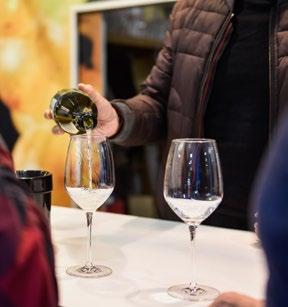
Extra virgin olive oil, craft beer, quality food and wine productions and, new entry of 2023, hard ciders. These are the protagonists of the 27th edition of Sol&Agrifood, the international quality agri-food exhibition scheduled at Veronafiere at the same time as the 55th edition of Vinitaly, which this year is joined by – within the same pavilion – B/Open, the b2b exhibition dedicated to organic and sustainable products. Objective: increase events that focus on certified food, within a calendar in line with the needs of companies in the sector. With a strong business impact, the synergy between the two exhibitions thus becomes the meeting place between supply and demand where exhibitors talk about their products to buyers and HoReCa operators through masterclasses, tastings, educational and cooking demos.
Space will also be given to the products and accessories that complete the offer linked to production and promotion at Vinitaly Design, the Vinitaly section dedicated to objects for tasting and service, to furnishings for cellars, wine bars and restaurants and bespoke packaging/gift wrapping. The Vinitaly Design Int’l Packaging Competition is linked to the Salone, the competition organised by Veronafiere and Enolitech which rewards the best packaging design for wines, spirits, liqueurs, beers and extra virgin olive oils. Eleven categories are competing to win the Gold, Silver and Bronze Labels as well as the special prize Label of the Year, Environment and Sustainability, Innovation and Technology, Large-Scale Distribution. The awards ceremony will be held on April 2nd, on the opening day of Vinitaly.
vinitaly.com
gamberorosso.it
foto Ennevi/Veronafiere
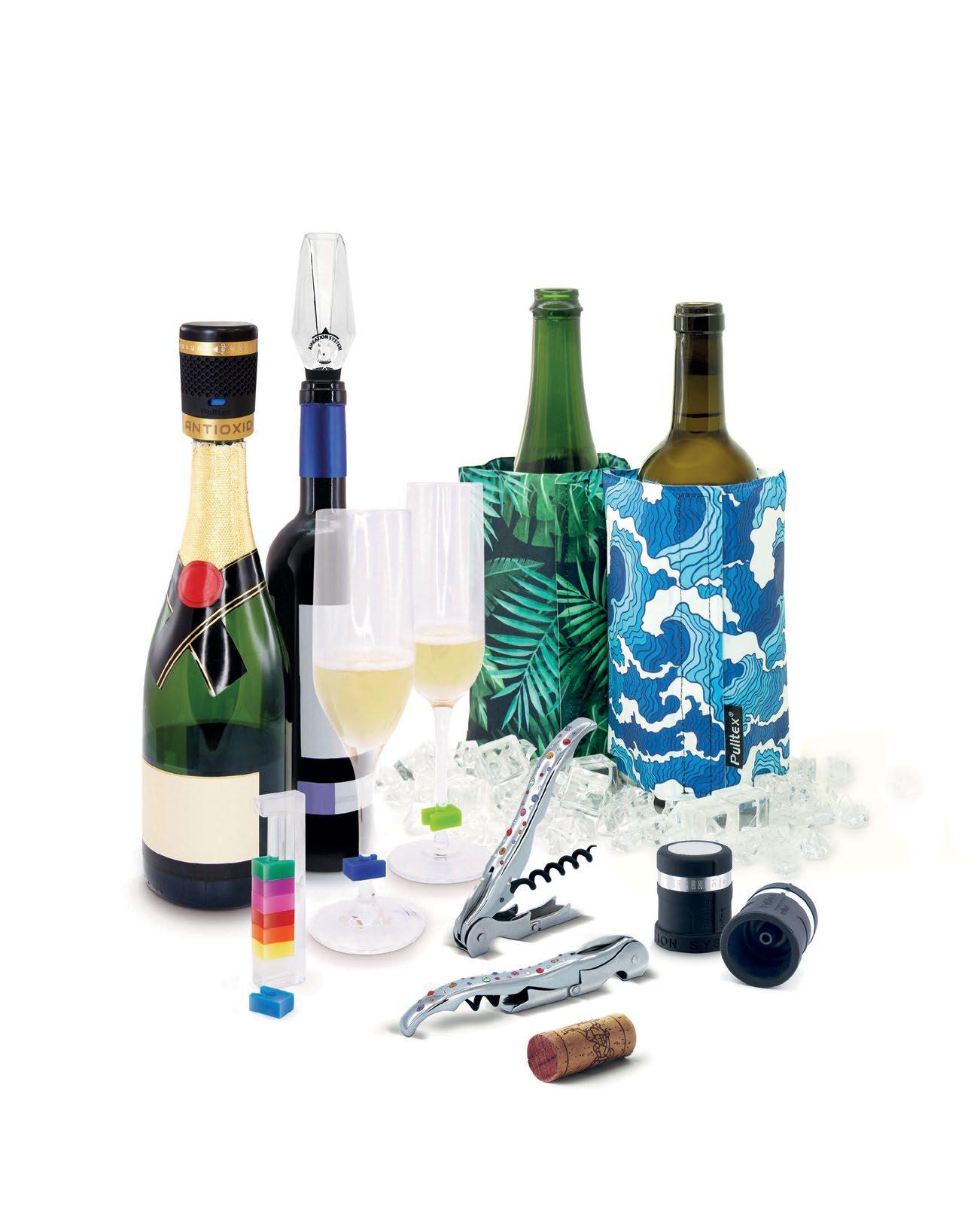

Not only wine tasting and Top Italian restaurants. For our return to South Africa, Gambero Rosso has led the producers to discover local viticulture. Cape Wine Master Bowman: “There is no winery that does not have Italian grape varieties.” And in the meantime the desire for bubbles is growing, representing three quarters of exports from Italy
 Words by Giuseppe Carrus and Marco Sabellico
Words by Giuseppe Carrus and Marco Sabellico
The first country outside Europe where vineyards were planted (over 350 years ago), South Africa boasts a longstanding winemaking tradition. But looking ahead, it is also one of the most promising consumer countries - given the habit of drinking quality wines - as well as being a hub for reaching other destination markets on the African continent. It is no coincidence that Gambero Rosso returned to Cape Town on January 26th with its Top Italian Wines Roadshow.
Bronca told us “but we have rarely found such an erudite and competent audience as here in Cape Town.”
“There is a climate of enthusiasm for Italian wine” adds Gabriele Pezzuto of the Piemonte company Batasiolo “the number of importers is growing, and the public is increasingly interested in Italian wines, which remain driven by the growing success of Made in Italy dining.”
The event took place in the suggestive setting of The Lookout, on Granger Bay Boulevard & Beach Road, a panoramic location with a spectacular view of the ocean, and which attracted over 500 enthusiasts and operators. Another great success for the producers present, over 30 companies, who were able to offer their top labels to a passionate and competent public. “There is worldwide attention for our Conegliano Valdobbiadene, for Prosecco in general”
Piero Balconof Sorelle

The tasting at The Lookout was not the only important event of an important day for all Cape Town wine lovers as well as for the representatives of the thirtyfour wineries in attendance. Important moments were also the usual masterclasses, three due to the extraordinary turnout, held by Marco Sabellico, Giuseppe Carrus and Winifred Bowman who, under the banner of “Italy in a Nutshell,” introduced participants to the peculiarities of our native grapes and terroirs of greater value.
“Italian wine needs events like this,” Emanuele Pollio, Consul General of Italy in Cape Town told us “especially in this moment of enthusiasm and rebirth of tourism, where new restaurant openings follow one another offering Italian cuisine and ingredients. South Africa imports increasing quantities of wine from Italy, which are often then poured into other countries by the emerging economy on the continent, from Namibia to Nigeria, from Botswana to Kenya. This Nation, with a long tradition of production and exports, is a comfortable and organised hub for our exports.” The diplomat took part in the Gambero Rosso event and presented the diplomas of the Top Italian Restaurants in the World guide (see sidebar), to underline the involvement and collaboration of the institutions with the Italian community, always well represented in the world by the protagonists of our food and wine, a true calling card of Made in Italy.
Today, Italy ranks second in South African wine imports behind France and precedes the very distant Portugal, Spain and Argentina. Exports of Italian wines to South Africa recovered sharply in 2022, after a 2021 characterised by considerable difficulties related to the spread of Covid and the well-known repeated blocks on the consumption of alcohol imposed by the
local government during the pandemic period, which put a strain also on the South African wine supply chain itself and the country’s export performance. In the ten months of 2022 (January-October), Italy sold 859,000 litres of wine in South Africa, with an increase of 30% compared to the same period in 2021. In terms of turnover, the increase is more substantial and is by 40%, with values going from 3 million to 4.2 million euros. The majority of Italian exports in value terms to South Africa is made up of sparkling wines, which in the period analysed accounted for 3 million euros (of which 2.2 million for Prosecco Dop alone).
This stage of the Roadshow, therefore, is a further encouragement to explore the African continent more closely: in countries with the most dynamic economies, such as Nigeria, Angola, Ghana, Zaire and Kenya, tourism is increasing rapidly and the growing income of the middle class is amplifying the demand for quality wine, an opportunity that Italian wine cannot pass up.
“The success of Italian wine is destined to grow in the coming years” explained Winifred Bowman, Cape Wine Master, an eminent critic of South African wine. “Italian wine represents an incredible treasure trove of biodiversity, and continues to fascinate South African consumers. Proof of this? There is no winery in the Cape area that has not planted vineyards with Italian grape varieties, and there are a growing number of Italian agronomists and winemakers employed here in South Africa. An ancient story, which dates back to the 17th century with the arrival of the persecuted Huguenot and Waldensian religious men from France and Piemonte, who developed viticulture, but which has
Italian Wines Roadshow





20 AUSTIN - USA Top Italian Wines Roadshow
25 MEXICO CITY - Mexico Top Italian Wines Roadshow
MAY
12
trebicchieri - Special Edition
Top Italian Wines Roadshow




19 HO CHI MINH - Vietnam Top Italian Wines Roadshow
SEPTEMBER
resumed with great vigour in recent years.”

If Giorgio Dalla Cia (first with his Meerlust and then Dalla Cia wines) found international success starting in the 1980s, there is no lack of more recent examples, such as the Ayama company of Attilio Dal Piaz and Michela Sfil-
igoi, Friuli natives with long winemaking experience, who settled in 2003 on the slopes of Mount Paardeberg, about fifty kilometres from Cape Town, where they took over a beautiful and large estate. “In addition to the classic grapes such as chenin blanc, pinotage and shiraz, we
have begun to experiment with Italian varieties: Vermentino (Gallura clones) and Carignano have given us excellent results and a good reputation. Then came the extra virgin olive oils, the artichokes. In short, we are bringing a little bit of Italy to this beautiful land that is now our
The first South African vineyards date back to 1655, and were planted by the governor sent by the Dutch East India Company, Jan van Riebeek. His successor, Simon van der Steel, did even more: he bought a vast estate near Cape Town, Constantia, which over the years has become a legend for the quality of its wines, initiating the oenological history of this beautiful place. The latitude of the vineyards, in fact, between the southern 27th and 34th parallel places them in a temperate zone similar to the Mediterranean one. South Africa today with about 100,000 hectares of vineyards is in eighth place in the world for the production of wine, and has an articulated system of denominations. Most of South Africa’s wine regions are influenced by one of two great oceans that meet at the southernmost tip of the continent: the Atlantic and the Indian Oceans. Refreshing sea breezes and a moderate climate intersect with a varied topography of different soils, creating unique wines of character.
Cape Town is located at the centre of wine production and from the city in less than an hour one can see vineyards and cellars. In the history of South African wine, one cannot fail to mention Constantia, the oldest company in these parts, born in 1685. To see viticulture flourishing, however, one had to wait for the 1900s, after phylloxera, which also arrived here and destroyed most of the vineyards. The relaunch was above all thanks to the cinsault variety, very widespread at the beginning of the last century and protagonist of the history of South African viticulture, ever since Abraham Perold, in 1925, crossed it with pinot noir and gave birth to pinotage. In any case, the most cultivated grape here is chenin blanc, also called steen, from which wines of excellent flavour and good acidity are born, and for this reason fascinating and full of character. This variety is also used to produce some classic methods. Then there are the international grapes, starting from chardonnay, sauvignon and riesling among the whites, cabernet sauvignon, franc, merlot and syrah among the reds. Last mention for colombard, hailing from the Moscato family, from which sweet and fortified wines are obtained. The production is regulated by a system that can be summarised with the Wine of Origin, which we can read on labels with the abbreviation WO: similar in setting to the European system, it provides for territorial certification only after an examination is carried out by a special commission. In addition to the indication of the place where it is produced, it is possible to indicate the grape variety (if varietal it must have at least 75% of that specific grape) and the year of harvest. For sparkling wines re-fermented in the bottle, the Méthode Cap Classique mention is used. There are three main production areas, Constantia, Stellenbosch and Paarl. Constantia is the oldest, it is located on the Cape of Good Hope and owes its fame to sweet wines obtained from Colombard. If we head east from here we find, an hour ’s drive away, the renowned Stellenbosch area, home of pinotage and other varieties. Here the mild climate and the influence of ocean currents are essential for the cultivation of grapes. North of Stellenbosch we find Paarl where, in addition to classic reds and whites, liqueur wines are produced, therefore fortified with alcohol, like some great European wines. In recent years, South Africa has invested heavily in zoning programs, to identify the best terroirs, cultivate the most suitable varieties, and therefore give life to wines that increasingly identify the individual territories. A multidisciplinary program is currently running at the ARC Infruitec-Nietvoorbij Institute of Viticulture and Oenology in Stellenbosch and the University of Stellenbosch. Initiated more than 16 years ago to identify soils, compositions, microclimates and their effects on grape quality, it has already had a significant impact in in finding a better match between variety and cultivation in the South African winelands to obtain wines, not only good, but also true witnesses of the individual soils from which they originate
home…” The same goes for the Morgenster of the Bertrand family, in Somerset West, which cultivates Sangiovese, Nebbiolo and Vermentino as well as international grape varieties and produces an exceptional extra virgin olive oil, or for the Idiom of the Bottega family which in Stellenbosch creates a series of acclaimed labels where such as barbera, nebbiolo, pinot grigio, sangiovese, not to mention zinfandel/primitivo, grenache/cannonau, carignan/carignano…

The stage of the 15th Road Show in Cape Town was an opportunity for several Italian producers to go and discover the wines of South Africa with the Gambero Rosso team. Two full days were organised. The first at the Beyerskloof winery, considered one of the companies that has most invested in pinotage. The company oe-
During the Top Italian Wines Roadshow event in Cape Town, virtuous examples of Italian restaurants in the city were awarded. The gastronomic scene is increasingly competitive, even the Italian repertoire is growing, with new openings of constantly and continuously growing venues. Seven restaurants were celebrated in the edition of the Top Italian Restaurants 2023 Guide. On the pizza front, Pizza Connection got Uno Spicchio, same score for the new Lievita sign, which a few months after its inauguration ranks among the best and most faithful pies of Neapolitan inspiration on the African continent. On the restaurant front, Una Forchetta went to Villa 47, a solid and elegant address, same rating for Il Leone Mastrantonio and Osteria Tarantino, a family trattoria with a warm and relaxed atmosphere. Una Forchetta and the Villa Sandi Best Contemporary Wine List award went to 95 at Parks, one of the restaurants of chef and entrepreneur Giorgio Nava, an authentic pioneer of Italian cuisine in South Africa. His restaurant offers Italian cuisine with a Lombardy accent, combined with a deep and articulated cellar, with many Italian wines alongside a valid selection of local labels. Finally, Due Forchette went to Scala Pasta/Bar, the innovative dining format opened last August by Paolo Carrara, in collaboration with Roman chef Luciano Monosilio. The strong point is the homemade pasta – the carbonara is excellent here – enhanced by traditional recipes and a Josper oven to give edge to sauces and meats cooked at high temperatures.
nologist and president of the Pinotage Association Beyers Truter organised a tasting of 10 pinotages from 10 different wineries, all of them awarded by the Absa (Top pinotage competition). In leading the tasting, alongside Truter, Abrie Beeslaar , oenologist of Beeslaar Winery and the renowned Kanonkop, and Winifred Bowman , Cape Wine Master (https://icwm. co.za) great connoisseur of South African wines, taster of rare sensibility and ambassador of Gambero Rosso in South Africa. The main production area is Stellenbosch and the wines tasted transmitted power, structure, but always balanced by freshness, lots of flavour and a tannic texture that suggests an excellent ageing potential. The second day we visited the Idium winery, owned by the Bottega family, of Italian origin. Once again space for many wineries that have proposed their pinotages, but this time in blends with some international vines, which have always been grown in South Africa, such as cabernet sauvignon, cabernet franc, merlot, petit verdot and syrah. However, pinotage is present for at least 50% and it has been noted that the variety born from a cross between pinot noir and cinsault performs very well when combined with certain varieties. After the tasting at Idium, owner Roberto Bottega and his partner Pedro Estrada Belli presented a focus on wine imported into South Africa, starting with the case-history on their import company which for some time now has been a leader in the country for imports of quality wines reserved for the HoReCa channel. And for a sweet ending, Roberto Bottega organised a mini-safari within their estate. Nature, zebras, antelopes, birds, trees and shrubs. The light of South Africa will always remain etched in our minds.
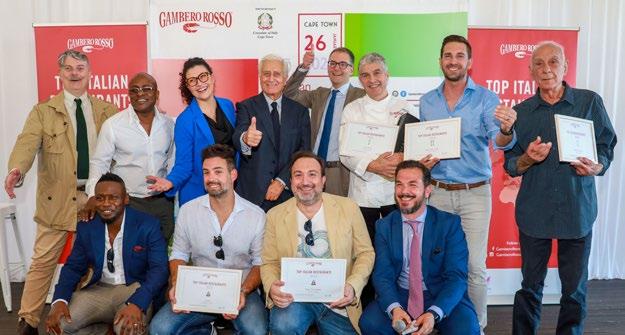
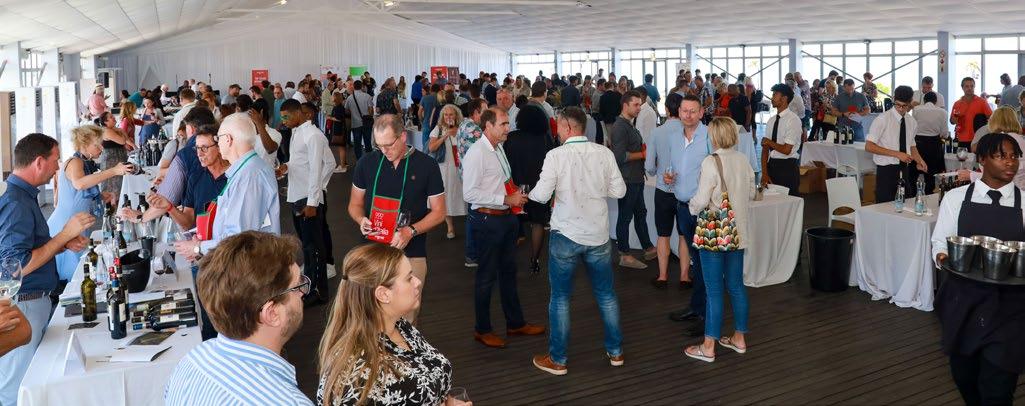


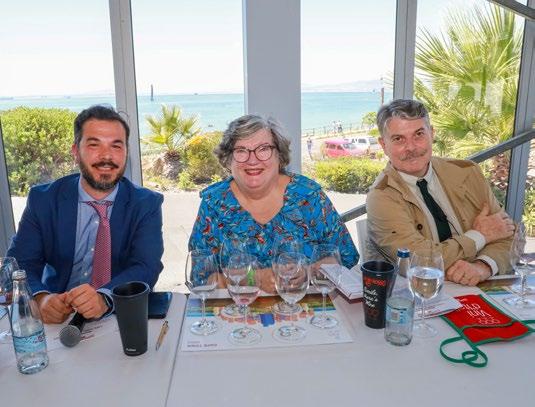
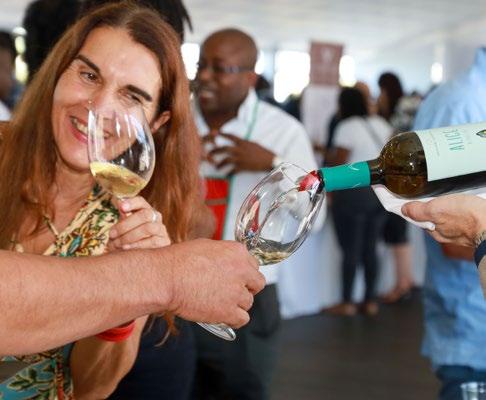
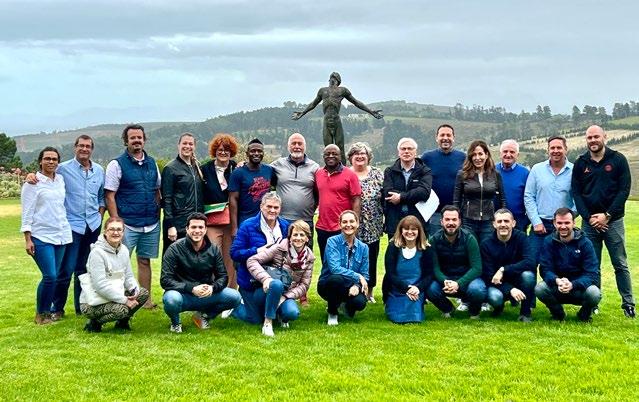
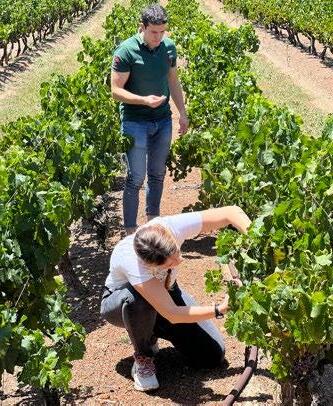



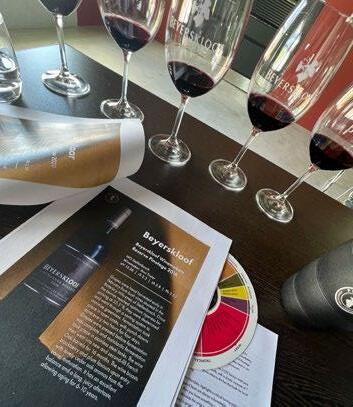

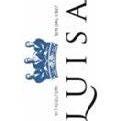

Tenuta Luisa is a splendid winemaking reality that encapsulates the story of fathers, sons and grandchildren, of passion and knowledge, of a family and of a wine that has carried the surname for more than a century: Luisa. Today the company is led by Michele and Davide Luisa, with the help of an indispensable guide, their father Eddi. Together they have built a solid production reality, where tradition and innovation coexist in harmony, known and appre-
ciated for its intense, complex wines of great balance and elegance. For several years now, the company has also decided to focus on classic and international grapes, such as Pinot Grigio, Chardonnay and Sauvignon, which have always been cultivated in an area with a great wine-growing vocation, but the workhorse remains the native grapes of the Friuli Venezia Giulia such as Ribolla Gialla, Malvasia, Verduzzo, Refosco and obviously Tocai Friulano. Tenuta Luisa,
in particular, has given rise to two different interpretations of by far the most representative white wine of the region’s oenology and viticulture. If Friulano Luisa represents the “young” version, the one made entirely in steel, Friulano I Ferretti is instead the “aged” version which, in addition to being produced with grapes from the company’s most important Tocai vineyards, is vinified partly in oak tonneau. If the former is distinguished by the unmistakable note of bitter almonds and the balanced acidity capable of giving a very pleasant sensation of freshness, the latter stands out for the complexity of the bouquet, perceiving aromas of sweet fruit, hints of yellow flowers and chamomile and toasted notes, as well as for the richness and volume it gives to the palate. Two wines that are both an expression and synthesis of the decisive and authoritative personality and the frank authenticity typical of this grape. Perfect in the classic pairing with prosciutto San Daniele, Friulano Luisa also lends itself to accompanying risotto with seafood or cuttlefish ink, roasted sea bass, sea bream baked in foil or chicken in broth gelatin. On the other hand, try the Friulano I Ferretti with Grado-style fish soup, traditional Carnic cialsons and Venetian-style liver.

 by Lorenzo Ruggeri
by Lorenzo Ruggeri
The Gambero Rosso World Tour drops the three of a kind on Scandinavian soil.
The Grand Hotel in Stockholm hosted the first stop, on February 13th, giving continuity to a work on the Swedish market that has lasted for over 20 years. Thirty wineries were present at the show, with a very intense participation of trade and sector operators, confirming an extremely vital market that continues to have a particular bond with Italy, and its organic productions. Lively tasting of the Special Awards of the Vini d’Italia 2023 Guide, conducted by Vice-curator of the Guide, Lorenzo Ruggeri. “Swedish sommeliers are looking for increasingly niche Italian wines, seeking among artisans even from lesser-known regions, I am thinking of Umbria, Calabria or Campania. Amarone is struggling, but I’m sure that in a few years it will recover and come back into fashion,” comments the importer of Italian wines in Sweden, Cesarino Gobbi. The Villa Sandi Best Contemporary Wine List Award went to Adria, a wine bar opened in the
Swedish capital in 2013. “We have focused heavily on the mix of small Italian producers, with many natural wines and
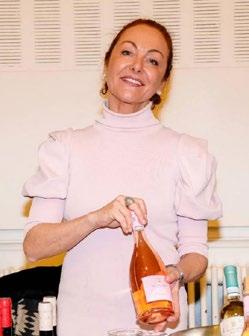
a streamlined and direct offer, the market has rewarded us,” commented the owner Michele Montanari.
Two days later, on February 15th, it was the turn of Oslo: the scenic Gamle Logen warmly welcomed 35 Italian producers who had come for the occasion. The consumer segment is certainly more involved than the trade segment, in a market that still functions on a monopoly
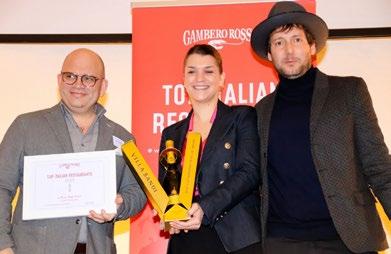
system, the Vinmonopolet, among the most rigid in the world, but at the same time enjoys one of the highest average spending globally. “If in the past years Prosecco dominated among Italian bubbles, now I see excellent chances for your Classic Method, starting with Franciacorta,” said John Gunar Hernholm, product manager of Villa Imports. The Villa Sandi Best Contemporary Wine List Award in Oslo tells a successful family story: the Zannini family. “Initially we opened a pizza by the slice place, we saw that it wasn’t the right format, we set up the tables and moved on to pizza pies, then the osteria and in 2022 also a wine bar, with live music and a menu of 100 Italian labels from all regions sold by the glass. We have also just inaugurated a seafood restaurant, Norwegians love Italian cuisine,” analysed Luca Zannini

The closure of the tour came at the Odd Fellow Palaet in Copenhagen on Friday, February 17th. Great protagonists were the 35 producers awarded in the Guide, among the guests was the Valtènesi Consortium, which proposed a dedicated tasting counter and a masterclass that confirmed the quality leap forward of the most awarded pink denomination in the Vini d’Italia guide, with the baptism of the 2022 vintage and some decidedly perky expressions also from 2021 and 2020. The second masterclass instead had a veritable Giro d’Italia, from north to south, among the highlights the Madre 2019 by Italico Cescon, a Manzoni Bianco that in only a few years became proposed as a true classic of Italian oenology. In Copenhagen, the Villa Sandi Best Contemporary Wine List Award went to La Buca degli Artisti, thanks to the work of the Lollo family who have created a very deep list of vintages and grape varieties, with many producers of character and traditional style. The only Tre Forchette award in town? It went to Tèrra, the creative restaurant of Lucia de Luca and Valerio Serino.
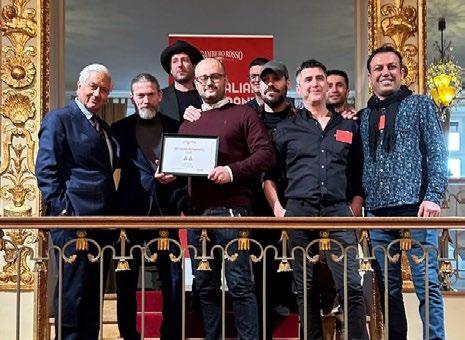

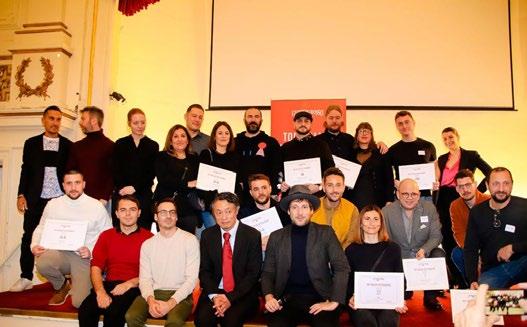




With a share of 23%, the United States is confirmed as the first country for Italian wine exports: in terms of value it goes up by 10%. And even better are the bubbles. This is why the Gambero Rosso tastings are expected almost like a National Football League final
 Words by Giuseppe Carrus
Words by Giuseppe Carrus
Los Angeles, San Francisco, Chicago and New York. The Gambero Rosso tour in the USA has just come to an end. The protagonists are the Tre Bicchieri, but also many other wines reviewed in the latest edition of Vini d’Italia 2023. “America and Wine cannot miss these events, it is as if a Super Bowl of Italian wine were taking place,” a producer told us. So, we just have to let you know how the match went, but above all analyse the state of the art of importing great Italian wines to the United States.
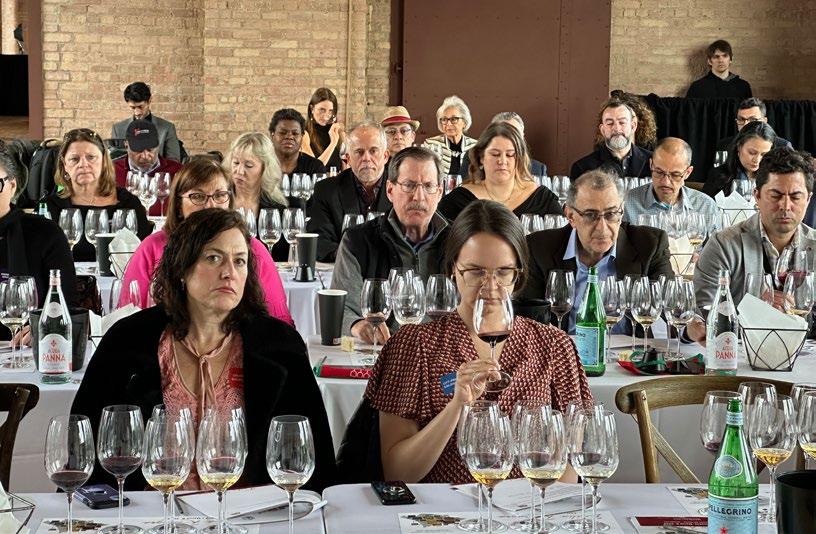
Straight from the commercial data, there is certainly no shortage of good news and the USA is confirmed as the first market in the world for Italian wine with a 23% share of total exports. In particular, wine exports to Italy grew by over 140 million euros during 2022, reaching 1.86 billion euros, with an increase of over 10%, according to
the latest ISTAT data collected in the recently announced 12 months. In terms of quantities, Italy exported 373 million litres of wine, about 30 million litres less (–6%) than a year earlier. The average price has increased by 16%, highlighting a premium trend that has already been underway for some time now. The value grows, therefore quality wines grow. Among these, bottled still wines, the main item of Italian exports to the USA, have almost reached 1.3 billion euros, compared to 1.2 billion in 2021, against smaller volumes (from 265 to 244 million litres). Bottled DOP wines register a +10% in value while IGP wines +4.3%. The bubbles chapter is even better. The sparkling wine item totalled over 520 million euros in value, compared to 460 million in 2021, for a growth of 14%, against substantially stable volumes (around 117 million litres, +1%). In particular, Asti is stable at 19.5 million euros, while Prosecco is flying with 442 million euros, compared to 371 million
euros in 2021.
Very positive data, therefore, which adds up to the perception received at our events, where thousands of people crowded the rooms where we organised the tastings of the Tre Bicchieri: March 1 in Los Angeles, March 10 in New York. In between were San Francisco and Chicago. From the West coast to the West coast in the name of Italian wine.
In the great Californian city of Los Angeles, an unusual cold welcomes us, in the neighbouring mountains we notice snow-capped peaks. “We haven’t seen snow for 30 years” they tell us. Despite this, in the rooms of the City Market Social House, the atmosphere was anything but cold.
Events started in the late morning with the Masterclass on Cerasuolo d’Abruzzo. Seven wines in the tasting conducted by yours truly together with Mark Newman, a great wine expert and importer in the United States. “There is a great desire for rosé wines in California,” journalist Stephanie Spurrs told us, “especially those that come from historical Italian denominations, such as Abruzzo, which have character and typicality.” Wines just released on the market, wines from cooperatives, wines from family-run wineries or wines with a few years behind them. The tasting offered a true reflection of wine-growing in Italy, not just rosé wine. The occasion was also tempting to talk about pairings. “What Italian dish do you drink it with?” someone asked, “what dish found here does it work with?” asked another. And throughout the day, a corner of the Vini d’Abruzzo welcomed wine lovers with their wines. But that was not the only one: there was also a corner on Sannio wines with 24 cellars present. At 1 pm, for the main tasting,

the large room was already crowded. A true record for Los Angeles, which is now proving to be a more than mature market.
We remained in California and headed north to San Francisco. Also this year the event took place in one of the piers of Fort Mason, a fascinating place to say the least, overlooking the bay, with the Golden Gate bridge and Alcatraz Island in plain view. The number of people who came to the old hangar was staggering. Perhaps one of the largest turnouts in recent years. Here too, the Tre Bicchieri wines for tasting were flanked by the corner dedicated to Sannio wines. “Here in San Francisco it’s always a success,” said an Italian restaurateur, who has been here for decades
“We are waiting for the Tre Bicchieri as the great celebration of Italian wine and there are many attending. Not only importers and distributors, but also sommeliers and restaurant owners.” Speaking of restaurants, both in Los Angeles and San Francisco the best Italian establishments in California were awarded, according to the Top Italian Restaurants Guide edited by Lorenzo Ruggeri. The south of the nation advances, great confirmations for San Francisco and the entire Bay Area.
From the West Coast we headed then to Chicago. Here the cold is customary at this time of year. Just as it is now customary to deal with increasingly quality and valuable wines. Chicago is a vast market, still expanding, mature but not saturated. Francesca Bonzano, a young representative of her Piemonte family business, has no doubts: “It was our first time with Gambero Rosso here in Chicago, expectations were high and we were not disappointed. We spoke with various importers and
Four cities, four great drinking destinations in North America, four awards as Best Contemporary Wine List, the award born from the collaboration between Villa Sandi and Gambero Rosso which is awarded to wine lists full of ideas, that are contemporary, thought out, and fun. In Los Angeles the award goes to Mamma Lupa, opened in 2022 and featuring traditional Roman cuisine, from supplì to tonnarelli cacio e pepe, passing through a thin and crisp pinsa. The wine list is beautiful, fascinating, with non-obvious choices. In San Francisco, the prize was awarded to the Enoteca Convivium, a place with a warm atmosphere and welcoming service. Excellent selection of wines, with delicious hidden gems, the result of small vignerons. In Chicago there was no doubt who the winner would be. Osteria Langhe is a great place for wine: in just a few years the restaurant has made its way into the hearts of many enthusiasts. It is one of those places where one goes willingly, sure to feel at ease and it is the perfect place to enjoy a bottle of true territorial wine, whether it is a Carema or a Grignolino, a Barbera or a great Barolo from a memorable vintage. Plus everything at fair prices. Last but not least, New York. Fasano was our choice. The success began with the restaurant opened by Gero Fasano in São Paulo. The New York adventure started a year ago right in the heart of Midtown. Classy and elegant, Fasano is a perfect place to enjoy top-level culinary experiences. The wine list has depth and personality, and includes labels from various producers and various vintages. The selection of wines by the glass is amazing. This too, is a well-deserved prize.
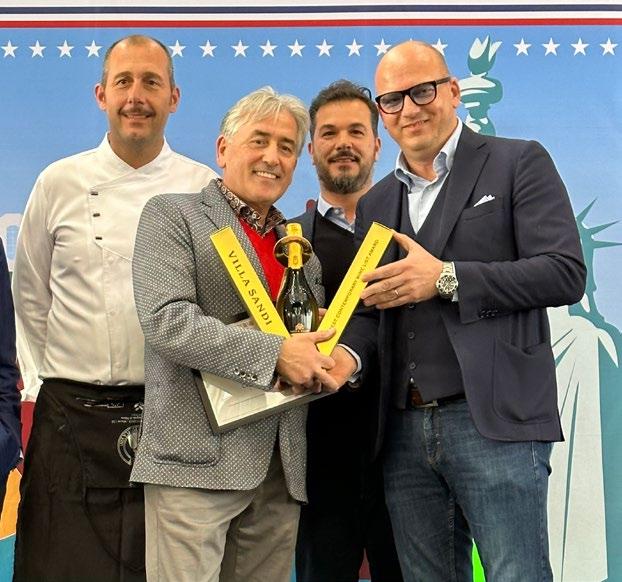
with many very well-versed guests.” Sonya Zanolla, commercial manager of the Valdobbiadene Merotto company echoes: “We are already imported, but it is important to return to the main American cities to meet the various customers; in addition, our importer is very keen on the Tre Bicchieri event. Now he’s off to New York, at the always well-attended event.” Also in Chicago, then in New York, in addition to the main tasting there were masterclasses and corners on the wines of Romagna, organised in close collaboration with the Consortium. The interest in the wines of this region was very high, also because with only eight wines it was possible to give a good example of this production area between whites (the Romagna Albana protagonist), reds (with Sangiovese in top tier) and a grand finale, a real gem, Burson made from Longanesi grapes, a particular in-


digenous variety that grows only in a certain area of the region. In both cities the masterclasses were sold out. Our Italian wine Super Bowl concluded in New York, one of the symbolic cities of the United States, where Gambero Rosso has been present for decades. The Metropolitan Pavilion is still there, in the heart of Manhattan and, as often happens, there was already a line at 1pm to access the event. So many people, the stands were literally stormed. “You can’t not come to New York, it’s too important. It’s nice even just to meet and discuss with the many producers present.” As told by Sabino Loffredo, Pietracupa winery, as he greets his fellow countryman, producer Massimo Alois. As a matter of fact, there were so many wineries: 200 to be precise. We also met the very young Nicoletta Pala, from the Audarya winery, once the event was over. “Ours is an emerging reality,”
she told us “but thanks to these events we have opened up the market in the United States. Coming here is essential and with a partner like Gambero Rosso we feel safe.” The event closed with the inevitable Top Italian Restaurants award. Undoubtedly, pizzerias stand at the top in New York, with a widespread and unrivalled quality in regards to other cities, as well as restaurants and new formats. One above all, awarded with Tre Forchette recognition. La Devozione – The Oval, at Chelsea Market. Three formats in one for the Di Martino family pasta bar: take-out, traditional and fine-dining, all in the name of pasta. And, needless to say, with a wine list that will blow your mind.
Italian wine is so present, one can actually breathe Italian wine in the States. Increasingly higher in quality, increasingly widespread in many places of worship of the America we like best.
www.gamberorossointernational.com/restaurants/


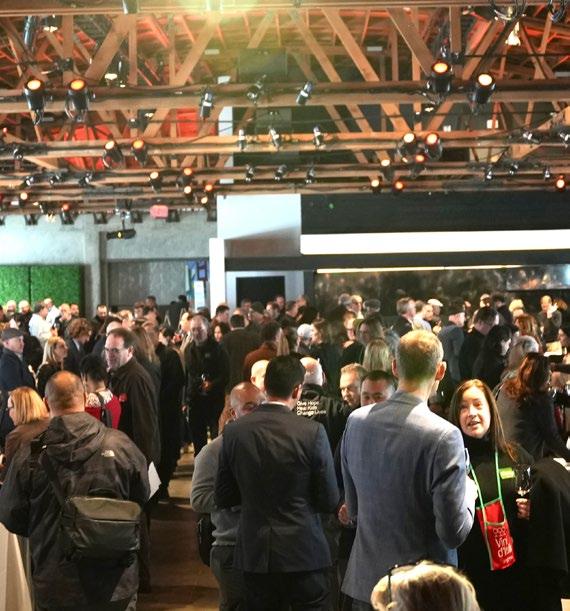





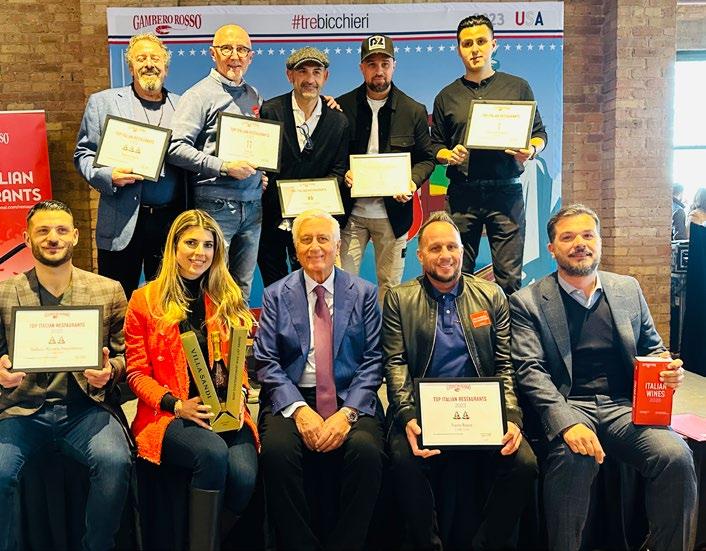






Let’s start with the official numbers: 49,000 professional visitors from 141 countries. In 2022 - interim edition of ProWein - there were 38,000 from 145 countries. The data portrays an increase, but we are still far from the 61,500 visitors of the last pre-Covid edition. Among the central themes of the trade fair are wines without or with low alcohol content - Kylie Minogue herself has launched her alcohol-free rosé sparkling wine - as well as alternative packaging. In a survey conducted by the fair, one in two people is interested in no and low alcohol, and one in three in alternative packaging. Other than this, impressions gathered are mixed. The great international vocation has been confirmed - of the 6,000 exhibitors 86% do not come from Germany - yet, for some years now the relationship between exhibitors and visitors has not been so favourable and the

On Thursday, March 16, the Gambero Rosso World Tour landed in Munich, a classic of the Gambero Rosso world tour for almost 30 years now. The event was staged for the first time at Smartvillage Bogenhausen, with almost 100 producers awarded in the Vini d’Italia 2023 guide. The presence of importers was impressive: many of the biggest brands are based in the capital of Bavaria, with a strong presence of Italians (there are over 100,000 compatriots in the region). Guests of the event were the Consorzio Primitivo di Manduria, with 11 wineries present, the Made in Vicenza association, which brought 4 wineries and typical sweets of the Veneto province for tastings, and the Consorzio della Valtènesi. The most awarded pink denomination in the guide was the focus of a seminar: Anteprima Valtènesi 2022, with 10 samples of the new vintage. During the event, the best Italian restaurants in Munich were also awarded: Mario Gamba leads the ranking with his Acquarello, Tre Forchette, while the Villa Sandi Best Contemporary Wine List award went to Martinelli, thanks to a curious and current menu, designed by Elena Martinelli.
event seems to have lost the appeal of a few years ago. Of course, as with other trade fairs, it must be said that by now wine producers always have their suit-

cases packed, they travel abroad every month, while events and meeting opportunities multiply.
“Prowein is not a walking fair” is the com-
ment of Davide Acerra of the Consorzio Tutela vini d’Abruzzo “those who have made timely arrangements worked well, preparing for meetings. If the number of producers grows every year and the number of operators remains almost constant, inevitably some will be disappointed.” The flagship of the trade fair, the infrastructures and transit, were also put to the test by a transport strike on Monday and Tuesday. “An edition that was slightly below expectations: it was supposed to be the year of relaunch. The strikes mainly penalised local importers. There was a lack of energy and spare parts,” analysed Michele Faro of the Pietradolce winery. Many producers confided how increasingly difficult it was to manage Prowein and Vinitaly so few days apart.
On the other hand, satisfaction appears among German operators and producers: “We are very happy for the first real postCovid Prowein edition. The quality of the visitors is very high and the new wider corridors between pavilions are also very appreciable,” declared Jullius Gluck of Pellegrini importation. “We feared that Vinexpo would erode our participation at Prowein, but that was not the case at all,” commented Valentin Rebholz, producer of some of the greatest Rieslings. Next appointment is 10 - 12 March 2024.
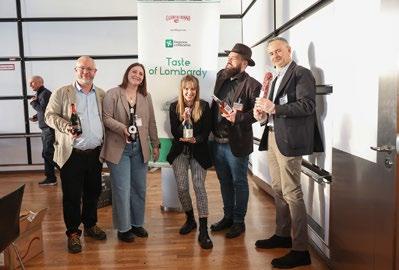


All the diversity of the Lombardy region in a super-attended tasting. During the Tre Bicchieri event in Dusseldorf, Lorenzo Ruggeri led a masterclass representing the best flavors in the region. The class started with a Garda Doc Spumante, moving on to a Blanc de Noirs from Oltrepò Pavese, then a Riserva di Lugana, a white from the Mantovani hills, a Riesling renano from Oltrepò, a Lambrusco Mantovano, the fine Rosato dell Anno produced in Valtènesi, the only wine ever awarded Tre Bicchieri

from the tiny Capriano del Colle appellation, a Bordeaux red from Valcalepio. The perfect closure arrived with a very fine Pinot Noir, vinified in red, from the hills of Oltrepò Pavese. All there wines were paired with local flavors including regional excellences such as Salame di Varzi, the King of Italian salami, or unique cheeses such as Salva Cremasco, Valtellina Casera, Quartirolo, Taleggio and Strachitunt.
As per tradition, the Tre Bicchieri tasting is what warms up the Prowein engines. On Saturday March 18th, almost 200 Italian producers took up residence on the scenic terrace overlooking the Rhine, the Rheinterrasse, for a record-breaking tasting in terms of both producers and audience participation. The Tre Bicchieri event in Düsseldorf was confirmed as the most international in terms of attendance, with visitors from over 40 countries. Numerous consortia were present with dedicated tasting counters, starting from the Puglia team under the Radici Virtuose umbrella (see box), the Custoza Consortium, the Consorzio Vini di Romagna, which brought 9 wineries to be tasted including Sangiovese, Lambrusco, Albana and pignoletto and a Lombardy Region corner with pairings of wines, cheeses and DOP cured meats. Three masterclasses led by Marco Sabellico and Lorenzo Ruggeri. The first exalted the longevity of Custoza, with a 10-wine vertical (2022-2013). The second offered a true journey in Lombardy, varying among the wines of Garda, Lugana, Valtènesi, Oltrepò Pavese and the Mantova district, together with typical cheeses and cured meats. Finally, the third appointment offered a taste of the diversity of Puglia wines: Radici Virtuose brought 12 local wines into the glass. During the event, the best Italian restaurants in Düsseldorf were also awarded. Among these, Michelangelo Saitta (Saittavini) took home the Tre Bottiglie and the Villa Sandi Best Contemporary Wine List award, thanks to an exhilarating list for breadth, depth of vintages and extraordinary availability of large format bottles.
Within the Radici Virtuose project, a program of economic, social and environmental regeneration of the Ionian-Salento area affected by xylella, promoted and financed by MIPAAF, there were three events organised in Germany by Gambero Rosso.
The first appointment featured Consorzio Primitivo di Manduria, ambassador of the Radici Virtuose project, with a dinner dedicated to the wines of the appellation. On March 15, Marco Sabellico, Lorenzo Ruggeri and Donatella Decataldo, in the setting of the Martinelli restaurant in Munich, presented 12 wines, vintages 2021-2016, perfectly paired with a menu designed to break the rules. The pairings with typical Puglia troccoli, coratina olive oil and taralli were surprising, the pairing of Primitivo di Manduria and monkfish with spicy caponata was sensational.
“The strength of the primitivo is its universal character. Intense, fruity, competitively priced, it is appreciated by everyone without so much as an afterthought,” commented well-known German journalist Jens Priewe
The second scheduled event took place on Saturday, March 18th at the Rheinterrasse in Düsseldorf: Marco Sabellico conducted a seminar that offered a taste of the diversity of Puglia wines: the Radici Virtuose program brought 12 wines representative of the territories of the three leading Consortia - Primitivo di Manduria Dop, Brindisi Dop and Salice Salentino Dop. The third appointment was instead a true Puglia Party in full swing, which was scheduled for Monday, March
20th again at the Rheinterrasse in Düsseldorf. The three Puglia denominations were once again the protagonists: Primitivo di Manduria Dop, Brindisi Dop and Salice Salentino Dop.
30 wineries delighted an international audience with orecchiette, panzerotti and bombette carefully prepared by Piazza Saitta restaurant. The beautiful voice of Ilaria Patassini, alias Pilar graced the evening, accompanied on the piano by Roberto Terenzi.



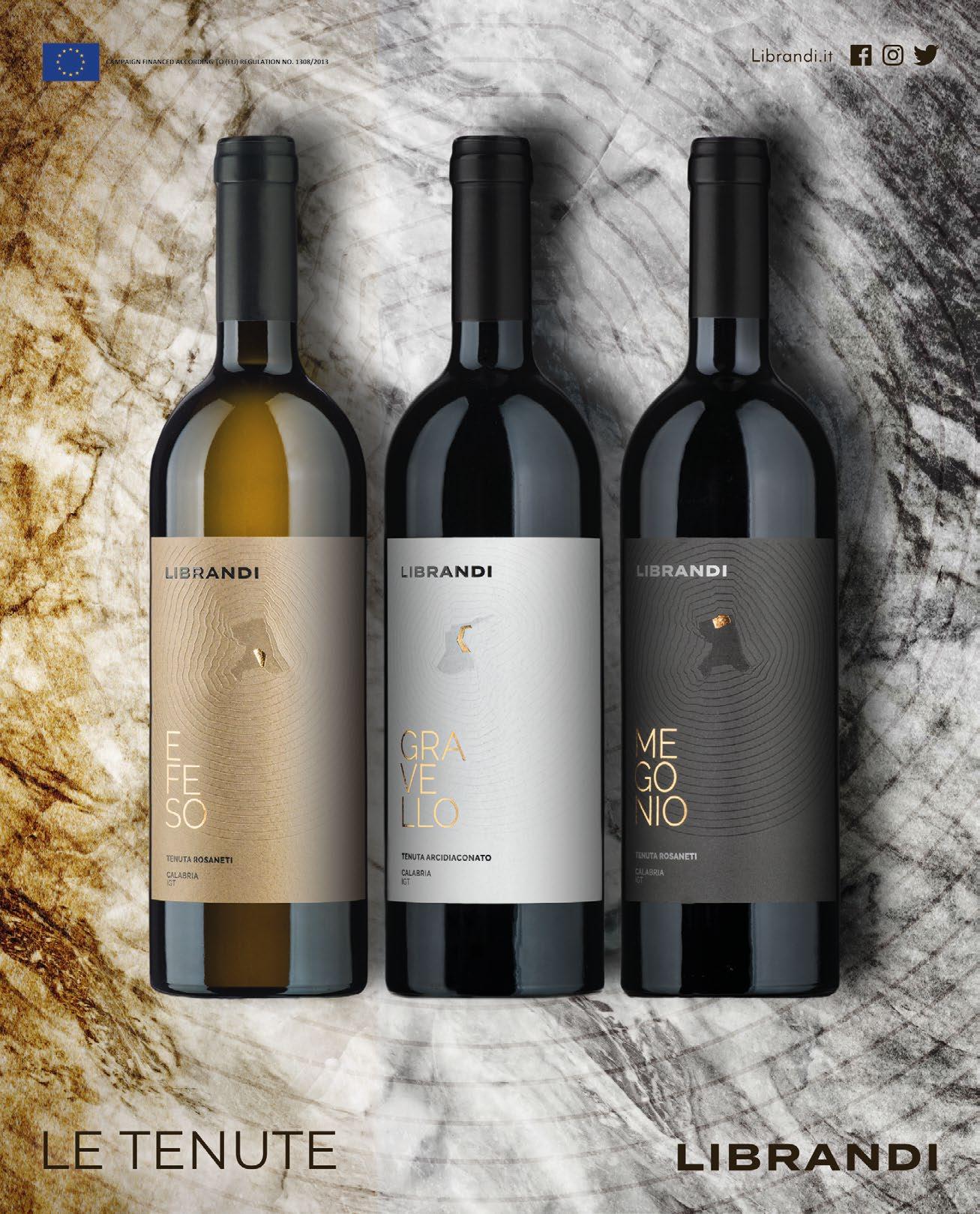




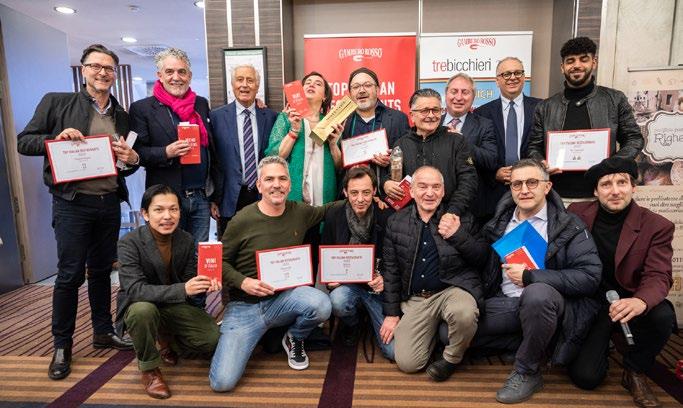





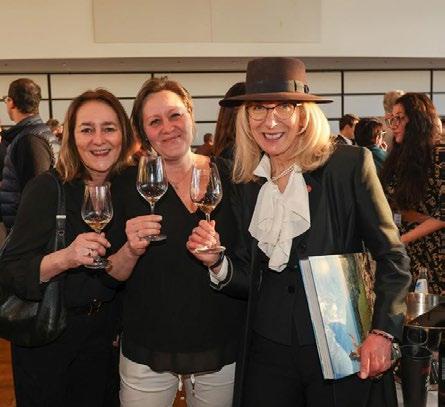

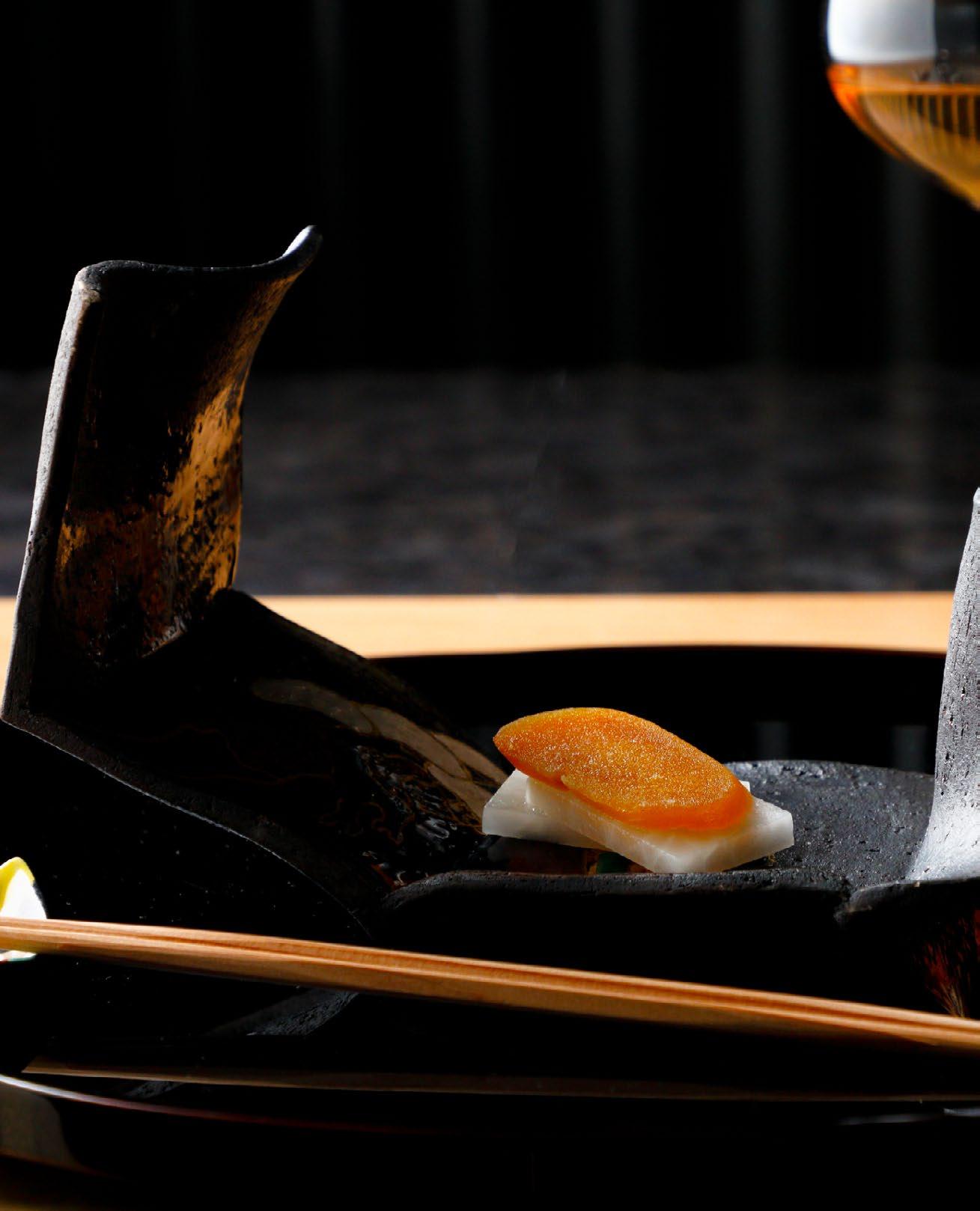
Japan’s No.1 sommelier, Hiroshi Ishida, explains 5 different pairing philosophies
 Words by Kyoko Nakayama
Words by Kyoko Nakayama
We believed that, sake is the best marriage to Japanese cuisine, but it is not the sole option nowadays.
Last December, Japan’s No.1 sommelier, Hiroshi Ishida (he won the title more than 3 times) teams up with Chef Shinichiro Takagi, owner chef of two Michelin starred restaurant Zeniya, also the executive chef of “Taka-an” in Aman Kyoto and did special wine paring event.
Ishida has worked with finest restaurants in Japan, such as historic restaurant “Tour d’Argent Tokyo” and “Beige Tokyo by Alain Ducasse” two Michelin-starred restaurant in Tokyo where he closely worked with Mr. Ducasse as

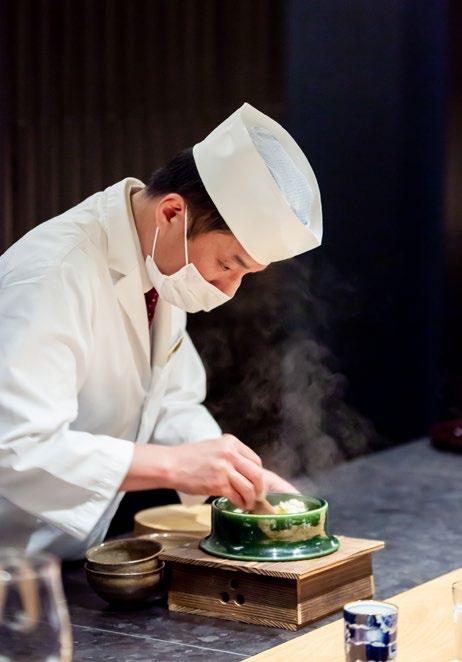
the general manager. In 2009, while Chef Alain Ducasse did the multiple collaborations with top Japanese cuisine restaurants in Japan including Zeniya, Ishida met Chef Takagi.
Chef Takagi said, “In general, compare to Japanese cuisine, western cuisine has more layers. Traditionally, Japanese cuisine uses only one aroma factor for one dish, but I use several to pair with wine”.
Ishida adds, basically, there’s two types of key principals, one is to enhance the one of the flavors (layers) of the dish, and the other is to complement the missing flavor elements. Also, Mr. Ducasse taught him the importance of “humidity” of the food in pairing. “Basically, wine matches well
with the food contain more moisture, because the flavor of the ingredients dissolved and generates more layers in the mouth”.
From the collaboration event, Ishida shared, 5 key philosophies for the pairing.
In general, Japanese cuisine doesn’t use much spices nor strong flavors, so when you select the wine for Japanese cuisine, low alcohol percentage(avv) and not too concentrated nor too oak-y flavors. The wine which has fi-
ness, delicate layers of the flavors from quality grapes. My key principal is, “finess surpuses power”.
PAIRING PHILOSOPHY 2, SAME LENGTH OF THE PERSISTENCE [“Owan” clear soup x Blanc de noir champagne]
“One of the most difficult pairing with Japanese dishes will be ‘owan’ Japanese clear soup, because it’s very delicate dish, pure flavor which represent 6th flavor in Japanese cuisine, “awa-aji”. Some chefs prefer to taste as it is, without any pairing.


Because of only tiny amount of salt is added, owan is often considered as light dish. I agree it has delicate flavor, but the persistence of this dish is very
long, so it is strong dish, in a way. For that night, Chef Takagi put Ishikawa prefecture’s winter signature, snow crab into owan. Chef Takagi lightly cooked this crab on charcoal, added fried tofu with toasty flavor, and put more kelp in the soup to get more ‘body’ to pair with wine.
Ishida picked Philipponnat, blanc de noir 2012 to pair with this, because of long aging, the acidity of champagne is not that sharp, and has the same length of the persistence as this soup. Two main ingredients, kelp and bonito flake also have the long aging process as vintage champagne. “Also, the bubbles of the champagne refresh the palate, owan has the same meaning in the course” he said.
PAIRING PHILOSOPHY 3, MULTIPUL PAIRING
[Snow crab x Pinot gris from Alsace]
“To break down into the each components, Philipponnat is more for the clear soup itself, but for snow crab, Pinot gris from Alsace matches perfectly. Sometimes it is nice to pair two glasses for one dish, to show the different aspects”.
PAIRING PHILOSOPHY 4, TEXTURE PAIRING [Yellowpersistence sashimi x Pinot gris from Alsace]
Next course was seasonal Yellowpersistence sashimi, Chef Takagi put it into historical ceramic maker, “Ogata Kenzan’s style green bamboo leaves pattern dish, which enhances
1., 3., 4. Hiroshi Ishida and Shinichiro Takagi. Takagi is also known as a huge wine lover, and they carefully curated whole experience.
2. A craypot of rice was freshly cooked for each table
5. Yellowpersistence sashimi
6. Snow crab sushi

7. Deep fried Tofu, Grilled Snow Crab clear soup
8. Hiroshi Ishida’s serve the wines in elegant manner


9. Charcoal-grilled Wild Duck
10. Interior of Taka-an
11. Taka-an is located in Aman Kyoto
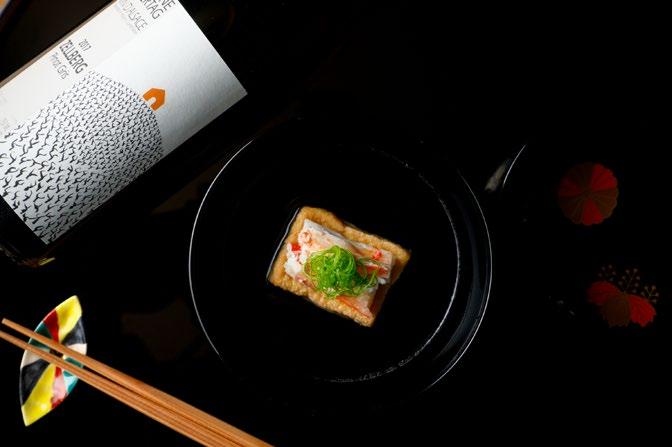
12. Persimmon, Mascarpone
the glow of fatty pink-white meat. He put two slices, one is from belly, another from the back, to enjoy the difference. Instead of serving soy sauce on its side, he put grated ‘daikon’ white radish with dashi-soy sauce, to give the exact balance of the saltiness.
Ishida purposely served the same wine to pair with this, from different reason, “texture”. “Because this pinot gris has slight
sweetness and because of the residual sugar, the texture is little bit thicker than usual pino gris. The texture of fatty yellowpersistence is the same. If the food and wine have the same texture, these two get along with in the mouth”.
PAIRING PHILOSOPHY 5, COMPLEMENT PAIRING

[dried kaki with mascarpone cheese x
Madeira aged for 10 years]
“Good example for complement pairing is sweet ending of the course. Wagashi usually doesn’t contain much of acidity”. On that day, Chef Takagi serves dried kaki with mascarpone cheese. Ishida selected 10 years aged Madeira, to pair with oxidized flavor of dried kaki, and he picked high acidity Madeira. Because of

the sweetness and complexed, deep flavors from aging round up the acidity, so it creates beautiful harmony.
Ishida conclude, “when you see the good combination of the food, such as duck and pepper, you can find the similar flavor elements in wine as well. Wine and food are not in different fields. After all, it’s all about the flavors”.
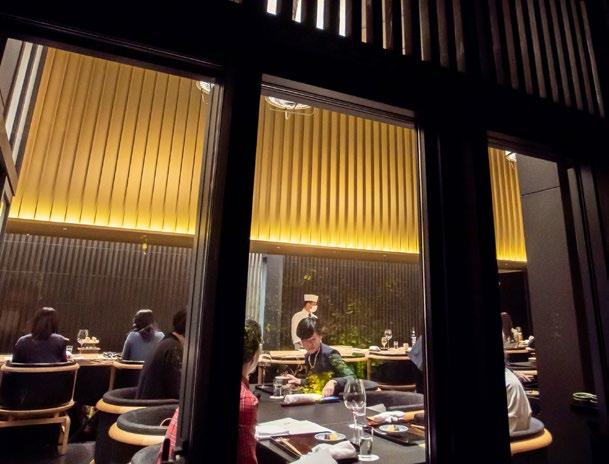



Radicalisation, extremism, excess... These seem, for better or for worse, to be the buzzwords through which chefs, restaurateurs and food business entrepreneurs are preparing to face the near future. Whether it's concepts, ingredients, environments or atmospheres, everything seems to concentrate and push towards radical conclusions: both in a positive sense, with broadening of awareness and involvement, and in a negative sense, with superficiality and temporary fashions...
Here is the future served, in 20 entries
words by Antonella De Santis – photos by Andrea Morini«The guest is king», Elena Arzak said a few months ago from the stage of the Kursaal venue in San Sebastián.
From the Gastronomika convention she launched a revolutionary reflection, in that context: «There is a new public with multiple and different sensitivities, with intolerances and who want other than the tasting menu: because they want to choose, to live a unique and personal experience.» It is not obvious, especially in the country of the endless tasting menus. Whether it is an idea that has remained such, or a seed that will germinate in due time, it is in any case an emblematic reflection of the world of haute cuisine, which has to take stock, sometimes in the literal sense, in the pocket and in the field.
If a giant like Albert Adrià – yes, him – had to change the format of his Enigma, eliminating the "compulsory tasting" option and adapting the times to the needs of his customers, it means that times have really changed. Or they are in the process of changing. In Spain, just as - everything suggests - it's happening here in Italy. Not only because of the winds of crisis that are hitting Europe already prostrated by Covid (and now agitated by echoes of war), but precisely because of a reversal in needs and priorities, of those who frequent restaurants as well as those who work in them. And it is no coincidence that informal establishments that are halfway between a wine bar and a restaurant are proliferating, often popular with people who have a background in haute cuisine, who have chosen to free themselves from certain rituals and obligations now taken for granted. Here they are remodelling very
personal wine cellars, precise kitchens, slim menus designed by chefs and entrepreneurs who often give up the traditional division into courses in favour of a single list of dishes, large and small, which can be enjoyed freely. It is the signal of a desire for lightness and freedom. It is an indication, not the only one, of a world that is rethinking itself, in form as in content. Precisely in regards to contents, previews are often perceived at conventions that present reflections, research, proposals and novelties in tune within the sector. And if you imagine that they are addressing a restricted auditorium, that of fine dining which according to some is by now withering away, you have to listen to Niko Romito when he says no, it's not like that. «There is an open dialogue between "high" and "low" cuisine,» reflects the Abruzzo chef. Haute cuisine has the time, space, and human resources (even if not always economic ones!) to carry out research, experimentation which will then be absorbed by the entire restaurant world and often (just look at Adrià's history) also by the food industry. If today there are tools within everyone's reach, if we have technical knowledge that makes our table safer, lighter and tastier, this is due to "high-end" dining that was a pioneer, and its achievements then declined in various forms. «A gastronomic system works when research cuisine influences other types of "more democratic" models, even those linked to collective dining,» as the experience of Romito's Intelligenza Nutrizionale, in the canteen of the Cristo Re hospital in Rome has demonstrated.stra.
Il The duty of a certain cuisine is also to ask questions, and often the place to do so at conferences and trade fairs, as in the case of Identità Golose, where Romito and Cracco, in different but perfectly aligned moments, suggested the need to reformulate the concept of respect for ingredients, because the narration that claims that a quality product should not be touched at all is a huge misunderstanding. «Respect must come upstream,

Ways and times of eating out are changing, many trends are radicalised and many experiments become everyday life between new ingredients and formats
Balls out truth: communication poses an opportunity for restaurants. It's up to cooks to use it well. Whether it is a vehicle for information, sharing or simply entertainment, in 2023 it would be anachronistic to ignore it, and entertaining is, in and of itself, a way of communicating. With the internet there has been an overturning of canons: «If 10 years ago the mystery that enveloped the chefs' dishes attracted customers - "let's go there, to eat that dish" - now it's the exact opposite: we no longer have secrets» says Brazilian Alex Atala (D.O.M), in the same way as Basque Andoni Luis Aduriz (Mugaritz), one of the great revolutionaries of the kitchen «ideas are the most important thing, if I can share them I think I have done my job well.» Now, additionally, sharing recipes and preparations online brings customers to the restaurant. A loss of what Walter Benjamin called "aura", in favour of the creation of new pop stars who bring haute cuisine closer to an audience of non-insiders, «helping to spread knowledge of certain products and traditions that risked being lost» adds Atala.
What has been said about the importance of communication by top-level chefs with a great media echo has a reverse side of the coin: sometimes, as a matter of fact, the knowledge that seems to spread is in reality often only a facade. What is certain is that the strength of certain restaurants lies in the image they convey; someone like Dabid Muñoz plays the excess card: highly spectacular videos, high-impact venues, his DiverXo (awaiting the move) is a riot of flying pigs, curtains, gilded objects, and the menu is nothing less. Baroque, excessive, insolent, he is a barker magician who plays at raising the bet year after year. And he is one of the most beloved chefs in this part of the world. But also on the other hand, there are those who demonstrate that they have understood the dynamics of show business in the restaurant world, and say it without embarrassment: Takayoshi Watanabe is the itamae of Teru Sushi, a place opened by his grandparents 60 years ago in Tobata, a remote location in the Fukuoka Prefecture. After studying and working to get the best –«an excellent knife, excellent ingredients and great chef's eyes» – he reasoned on how to convince people to go all the way to try his sushi. How? "Putting on a show!" It's a little bit funny to see it, with theatrical poses and gestures readily shared on social media, similar to a Japanese Salt Bae, but the circus act hides technique and experience that are an integrated part of the gastronomic experience. And now Tobata is a place of pilgrimage. With the internet, therefore, the way of talking about food has changed, a change of perspective similar to what happened with Chef's Table, the Netflix documentaries that broke the stereotypes of storytelling in the kitchen, shifting attention from what is being cooked to why, following an emotional journey. Another medium, another audience: «The clientele that arrives through Netflix is often not the same spurred by the guides.» Word of Massimo Bottura

NO MORE SECRETS: WE MUST COMMUNICATE
in the in-depth knowledge of the product, then we must use all the technical knowledge available to make it an expression to the fullest,» is Romito's point of view, summarised by Carlo Cracco's comment, «otherwise what is the cook doing?» And if food needs are becoming increasingly urgent, it is research that drives us to find adequate answers, for example to expand the food basket, investigating the gastronomic potential of some elements or parts of them (like it or not, the openness to cricket flour goes in this direction: finding sources of animal protein that do not burden the environment in terms of emissions and soil consumption. And speaking of entomophagy: according to FAO, edible insects are part of the food culture of over 2 billion people around the world, and some of these have made their way into signature cuisine some time ago, such as the lemongrass-flavoured ants in Alex Atala's dishes, or the citrusy ants at Noma), or to find effective formulas of gastronomic sustainability, the one that considers reuse, the reduction of waste, the enhancement of ingredients in all their parts. But the road to sustainability is tortuous if approached with a critical sense. Take the concept of no waste: are we sure that cooking peels for a whole night doesn't have a greater environmental impact than throwing them away? «It depends, above all, on the quantity of waste,» replied Valerio Sorino and Lucia De Luca (Terra in Copenhagen, Green Star Michelin for sustainability). Or foraging, which, far from being good in and of itself, can pose a threat to wilderness: collecting what is rare can damage ecosystems. Conventions tackle this and more, when – alongside the genesis of new dishes – they try to get to the bottom of key themes not only of the table, but of our present. In this feature, we have tried to bring together the most interesting ideas, heard in the first weeks of the new year in Spain, between Gastronomika and Madrid Fusión, and in Milan, during the days of Identità Golose. A network of connections and reasonings has emerged that has led to drawing the profile of the food of the future.
The images through which I, a photographer, have chosen to illustrate this feature are not inspired by the article itself, but proceed in parallel, developing an idea of the future linked to futuristic scenarios. They are synthetic and extreme images, inserted in "virtual" landscapes created with the tools available to those who make (and create) images. These are digitally processed "visions" with MidJourney (Ai Art Generator) and Photoshop. Don't worry, it won't be like this at the table! So – for now – it's in the computer processing photos and ideas…
 – Andrea Morini
– Andrea Morini


We had already noted it in last December's monthly (issue number 371) for The Best of the Year: a tendency of chefs to gather in groups which, even without any label, share attitudes and philosophies, advice, producers, often kitchens hosting each other and weaving a thick web of shared relationships and appointments. A little like what happens in international haute cuisine which circuits the stars of the kitchen in veritable tours in the kitchens of the world. Is this just the beginning? The mirror of a "normality" based on increasingly less stable balance, new perspectives appear on the horizon: shared kitchens, shared restaurants, not a new figure like that of the cook with no fixed abode, without a fixed operational headquarters but who - equally to actors or musicians – moves around Italy or in the world following a calendar of event dinners within other realities: restaurants within restaurants, designer pop-ups with a high rate of enjoyment. But without a parent company behind it (but rather a visionary entrepreneur!). A way to get away from the pressing difficulties of the restaurant business and to get out of the unsustainable rhythms of "life as a chef.".
What's more exclusive than a fine dining restaurant? A reserved room with only one table inside a fine dining room with menus, mise en place and service that's different from the main room. Halfway between a chef's table and a secret restaurant. Whether it's for the need to differentiate the offer, or to have more fun (and complicate one's life), or simply to raise the bet, the fact is that one is no longer enough. Restaurant San Domenico in Imola has renovated its spaces by creating a small counter and Saletta22, a private area that looks through a secret mirror at the kitchen where Massimiliano Mascia and the brigade prepare a personalised menu. Pagliaccio has repeated instead with Parallels Experience: a room with (another) tasting menu, this time available online, through which chef Anthony Genovese expresses a solid, mature cuisine, less inclined to the wow effect and concentrated on big cooking methods and dishes with a more classic imprint, accompanied by service in the old school dining room – all about guéridon and portioning – by Ilaria Schiavi, the true personal butler of the room, flanked by Matteo Zappile. They are not the only ones: already last year Christian Mandura had doubled his Unforgettable with Paradigma Il Paradiso degli animali, on the first floor, only four seats in an optical white room with a menu that only works one animal per season. Franco Pepe's tasting itinerary, in the Authentica space on the upper floor of Pepe in Grani, allows you to see the pizza maker at work with a "tasting" served on the counter positioned above the oven. A bit of what happens –with the necessary differences – on the second floor of Ronin, the incredible palace of Japanese cuisine and culture with street food, a robata restaurant, cocktail bar, karaoke rooms and Omakase room (see the article dedicated to this trend on page 49) which offers super exclusive tasting itineraries, and will be even more so with the arrival of Katsu Nakaji who will be "resident" chef for two months. (See Coworking & Restaurant sharing: Chefs with no fixed abode

The theme of self-sufficiency, of the vegetable garden behind the kitchen and of the super-zero kilometre, imposes (or gives, according to one's point of view) constantly adjusting menus to follow the evolution of micro-seasons, the trend of the products week after week, the unexpected. These grow when we talk about the collection of wild herbs. Fascinating practice but to be approached with the awareness that foraging requires knowledge and attention: indiscriminate collection can hurt the ecosystem. This is how Antonia Klugmann (L'Argine in Vencò) celebrates the value of surplus: common garden weeds, those that grow on the margins of anthropized areas: «We need to – she explains – deprive the environment of what is recreated faster, even if it is far from a market standpoint.»
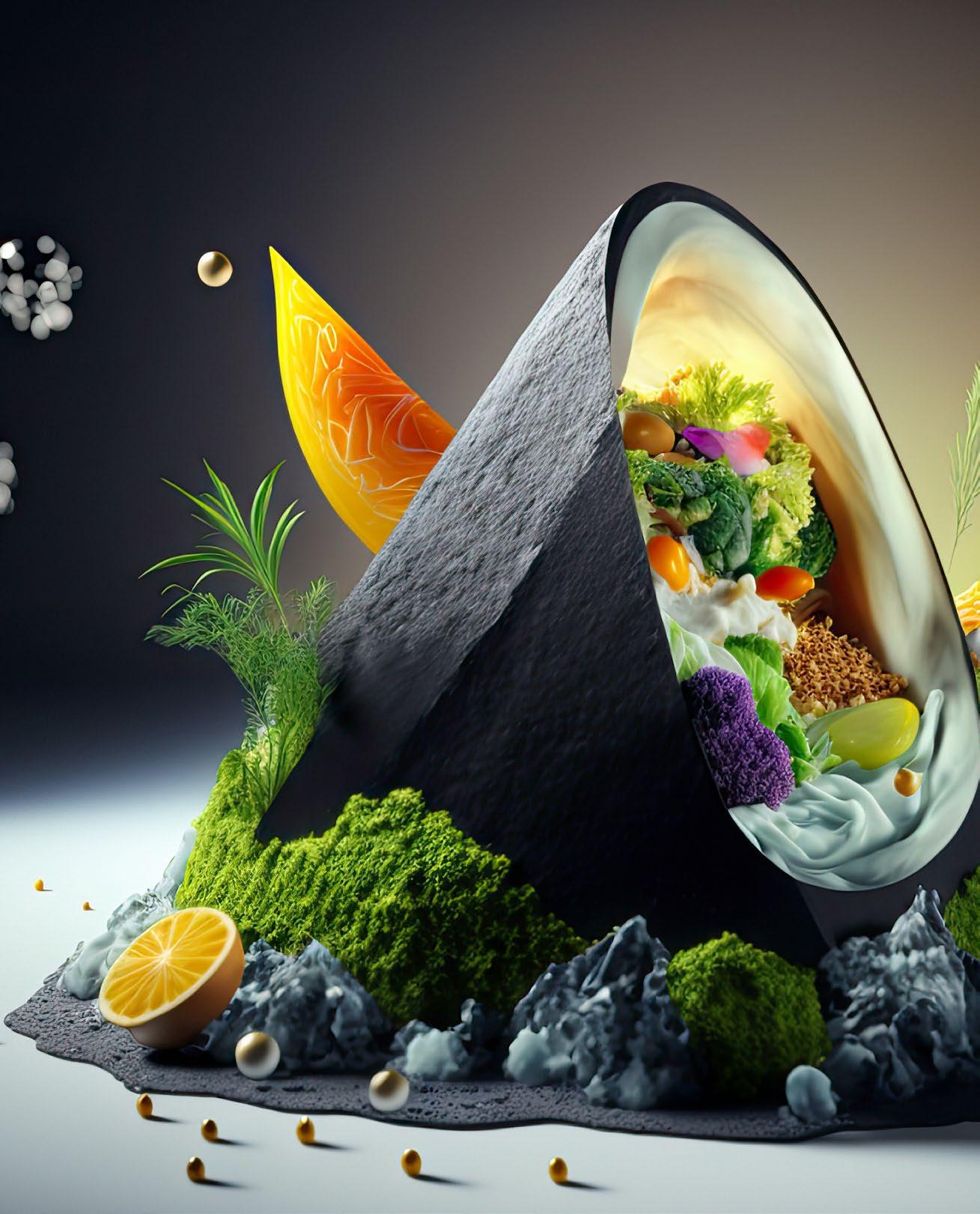
There is no sign of diminishing interest in grills and live fires (we talked about this topic in the Gambero Rosso issue 367 last August), with the evolution of ancestral cooking in ever more refined forms and methods, now introducing the lesson of the great Spanish asadors and their heirs (there is a good example in Madrid, with Dani Garcia's Smoked Room, where head chef Massimiliano Delle Vedove works). It is no coincidence, as a matter of fact, that chefs of different imprints and characters court her. For example? Jessica Rosval (Casa Maria Luigia in Modena) and Errico Recanati (Andreina in Loreto), the chef who had the merit of bringing live fire to haute cuisine in Italy. Not very close, but not so far either, they offer two polar opposite visions: she is an intellectual, he is a brutalist who today shapes embers with rare sensitivity, offering a complete menu that uses fire directly and indirectly in search of new textures. As for the heart, simply hanging for a long time next to the embers. Without prejudice, furthermore, to the idea of fire as a lifestyle rather than a cuisine, as for those chefs who venture into the most remote regions (see: At the edge of the world) to embrace a vision that refers directly to hunter-gatherers (see: Food autarchy): this is the case of Nicolai Tram of Knystaforsen, in the Swedish forest, a new Robinson Crusoe of fine dining, who cooks outdoors, over the fire, loved not only because – he explains – it makes food tastier, but also because we are what we are thanks to fire: «Fire was the beginning of everything.» And ethno-anthropology confirms it. After all, controlling fire, its domestication, has a value in itself in the evolution of the species. And cooking, as a cultural manifestation of human nature, follows suit. Roasting, grilling, smoking, burning are techniques used in this open flame cooking which today leads to results that cannot be taken for granted. In a face-to-face fight with flame and embers that recalls a mythological challenge. You have to know fire, there are no shortcuts, there are no automatic controls, you work with your senses: you look at it, touch it, smell it. «Cooking with fire – says Jessica Rosval – takes time, you have to keep a close watch.» Think of the ritual dance by Aitor Arregui & Co. in front of the Elkano grills in Getaria (Basque Country). «And this has changed everything for us – continues Rosval – by removing we have added.» No roners, induction, technology. «We have recovered the gestures, we have approached different preparations: simpler dishes but more powerful, as far as flavours and presentation.» Monochromatic dishes such as Think green were born, a dessert with cream caramelised in a wood-stoked oven (See: Towards the essential: mono-ingredient and monochrome).
Juri Chiotti cooks in Busca, in the province of Cuneo; but before that he grows, raises, caters to the needs of his restaurant, and finds freedom in simplicity and total self-sufficiency, through self-production and an economy of proximity. His Reis Cibo Libero di Montagna is an autarkic, radical organism. An extreme experience, in an extreme territory (see: At the edge of the world) in which one frees oneself from seemingly imperative obligations. Partly with the idea of a happy decline or a return to the land, with the twist of signature restaurants. Partly with the desire to independently produce ingredients for one's own restaurant, in whole or in part. Easier when we talk about activities surrounded by lush vegetation, as in the case of La Tenuta Resort Agricolo or the Arso project inside the Agriturismo Pulicaro farmhouse (in Torre Alfina in the Tuscia Viterbese), restaurants in farmhouses on the edge of cities (such as Tenuta Urbana in Brescia) or in small towns such as Avezzano where Franco Franciosi produces grains for bread a few kilometres from his Mammaròssa or – again – in restaurants with their own farm, for example in Campania Don Alfonso 1890 with Le Peracciole or the Antica Osteria Nonna Rosa with the Montechiaro farm. More complex when it comes to establishments in larger cities, such as Remulass in Milan or Retrobottega in Rome, where Alessandro Miocchi and Giuseppe Lo Iudice, even if not really farmers, make their requests for foraging to explore vegetable gardens and green spaces and supply their pantry with herbs, seeds, roots, berries, sprouts, expanding the basket that stokes their menus, one of which is dedicated to the plant world offering extraordinary flavours and nuances (see: Garden & Seasons), perhaps a legacy of Miocchi's experience at Enrico Crippa with his legendary vegetable garden.


There is gastronomic value in the texture of foods. And it is an awareness that crosses cuisine with centrifugal force. Not only in the search for textures as learned from the Spanish school, but with the belief that structures are an integral part of the identity of foods, with precise organoleptic value. «It is often said: feel how tender this meat is, it melts in your mouth - says Luca Sacchi, trusted right-hand man of Carlo Cracco, executive chef of Cracco in Galleria - but one cannot think that everything is the same and tender. Tenacity and textures are properties of meat, especially quality meats, which must not be lost.» Even certain imperfections create different structures, which are natural and due: every meat, every animal, every cut has its own characteristic structure that needs to be valued, and that tells a lot about how it was treated, in life and after. It is a step forward towards a deeper understanding of the product, and how it can be valued.
When Antonia Klugmann thought about risotto, she tried to find a way to enhance rice. Not just a "basic element," but the absolute protagonist of the dish. You have studied how to emulsify rice with itself, with a cream made with grains soaked in water and blended. Starch, structure (see: Texture & Structure: new ingredients ), creaminess even at low temperatures (a significant plus if you think of the classic risotto with butter and Parmigiano) and an intense flavour of rice. Using it with cauliflower (of which she used milk for cooking risotto), juniper flower heads, wild pepper and bay leaf. She could have fed it on itself, a bit like Marco Ambrosino did some time ago (we told you about him in last September's Gambero Rosso, issue number 368) with mixed pasta and fermented pasta. The trend of the ingredient "alone" is served. And it's amazing. Exactly the opposite of someone like Dabid Muñoz who has transformed his tasting menus into essay cinema marathons, those that broadcast cult b-movies: DiverXo's menu has over 300 ingredients. Speaking of essentiality and single-ingredients there is a name that emerges strongly, and it is (again) Niko Romito , for an expressive purity that concerns form and content. The now historic artichoke and rosemary is an example of how his obsession with unhinging the product to reveal its hidden sides has led to the hyperuranium of flavours, the place where the artichoke tastes more like artichoke than ever. Or the carrot reveals a new and unpredictable character. Jessica Rosva l, on the other hand, declines the culture of essentiality in aesthetics, arranging bare, monochromatic dishes, which on the one hand look to the painting of the early twentieth century - Malevic, Rodchenko, certain Rothkos, Manzoni and then Fontana's work on matter and Burri, just to name a few – on the other they enhance the impact of the dish in terms of flavours and presentation (see: In the name of fire ). This is the case with This is not a mussel: from the Adriatic to Modena which, in addition, gives a nod to Magritte.
But also from bean bar, or from sea to table or any formula you want to use to define the concept From Producer to Consumer. Still? Yes it continues: because Europe is asking us for it and because our food system is also asking us for it, which needs to be rebuilt on a more equitable basis. Those that, moreover, also represent an advantage from a gastronomic point of view: the direct relationship with the producers ensures raw materials tailored to everyone's needs. You can't always produce your own ingredients yourself (see: Food autarchy) and basically it wouldn't even be right: taken to the extreme it would put the artisan sector in crisis, which instead can and must

Still on the "structure of food" front, a sub-trend is explained to us by Errico Recanati, master of the grill, starting from his own experience and his deep love for offal: «I didn't like them. And I understood why: they were runny. Giving them back the right dignity means giving elegance in the right consistency.» So his personal offal revolution goes straight to the heart: with grilled ox heart (see: In the name of fire), with his own grown puntarelle (see: food autarchy) mustard in seeds and in sauce, accompanied by a 68% smoked chocolate praline filled with a heart (obviously) and sour cherries. To give more strength to the concept: a heart-shaped sculpture plate (no, not the romantic and stylised one).
Once, asking Gualtiero Marchesi what was one of the identifying characteristics of Italian cuisine, he told us that chewing, the bite, was certainly an important one. Chewing allows you to perceive different nuances in food (the ubiquitous crunchy part in dishes demonstrates this) and restores an important aspect: «The sense of work», what Alberto Gipponi (Dina in Gussago) perceived in tasting at the Cerea brothers (Da Vittorio in Brusaporto), of a perfectly al dente pasta: «That texture shocked me,» says Gipponi, who later dedicated an entire menu to pasta. But the concept of structure as an expressive element of a food also applies to vegetables: Niko Romito (Reale in Castel di Sangro) is the spokesperson for it who forcefully affirms that he damned himself on some products to make sure that they expressed the maximum both in flavours, bringing out even the tertiary ones, and the structures. Broccoli and anise leaf, one of the symbolic dishes of the magnificent 2022 vegetable menu, is the result of intense work «We started with traditional techniques: steam, controlled temperatures, with disastrous results.» Then it was the turn of brines. Objective achieved: «Respect the structure of the leaf and the consistency which is itself an ingredient.» The fibre to give density to the fond, and it's done. No, chewing is not a crime.
Trout, pike, carp, catfish, river sardines, shrimp: the spotlight on freshwater fish finally seems to have been switched on, opening a passage to a cuisine born of a lesser god. And even if in certain restaurants it has been celebrated, and with satisfaction, for years – think of La Trota of the Serva brothers in Rivodutri or the Piccolo Lago of Marco Sacco in Verbania, Norbert Niederkofler at St. Hubertus in San Cassiano in Val Badia or, in the city, at Cesare Battisti's Ratanà in Milan – it still can't get the space it deserves. The great restaurants in the world, in fact, do not give up presenting fish products, even when they are hundreds of kilometres away from the coast, but they still hesitate to tell about these fish that are in some ways still undiscovered. However, the time is now ripe if someone like Dabid Muñoz, in his labyrinthine tasting includes Pyrenean trout, "matured for 45 days," in homage to the Japanese technique of sushi with "seasoned fish" (like that of Koji Kimura), steamed and served in several courses with the belly combined with river crabs and wasabi. But to understand the potential of these products, it is necessary to contact the Portuguese Rodrigo Castelo (Taberna Ó Balcão, Santarem, on the banks of the Tagus River), who focuses on the recovery of little-considered ingredients, starting from freshwater fish, processing as many as 17 species, also predatory and invasive, coming from the Tagus and its tributaries. Brined, smoked, seasoned, almost never fresh: «River fish has a very characteristic flavour that is not always appreciated.» While Konstantin Filippou in his restaurant by the same name, in Austria, mixes fish of different origins in a mélange with a double soul for the chef with a "double heart:'' Austrian and Greek. Therefore, by demarginalising these narrow-edged foods of local cuisine and welcoming them into the elite of signature restaurants, we could expect an increasingly consistent presence in our kitchens tomorrow.

It's an element of common sense now: sustainability. But it would be a mistake to think that this approach is all about vegetables and herbs. Nor is it just farmed meat. Leaving the Peninsula, Christian Puglisi, an Italian stationed in Denmark, reflected on the need for sustainable agricultural practices and a more harmonious approach to the environment, founding his own farm outside Copenhagen in which to cultivate and raise cows, then reasoning on the role of hunting as an autarkic and sustainable practice: «If you really have to eat meat, at least hunt it yourself.» Like Puglisi in Denmark, or Luis Alberto Lera in Spain, there is also the experience of Brado, in Rome: a meat-oriented place created by expert hunters. Of course, the concept that hunting is sustainable is an opinion not shared by animal rights activists and various environmentalists according to whom, however, it would be completely unsustainable as a model. (Topic we talked about - several times - in issue 349 of the February 2021 monthly).
Seasonality, sustainable fishing, local species, humble varieties of fish, the use of entire animals. When it comes to seafood cuisine, one thinks of fish, but considering the sea only for a part of its products is a mistake. The marine one is a complex ecosystem, which – like landmass – includes different altitudes, or rather depths, in the case of the sea. Those told by a chef like Gianfranco Pascucci of Pascucci al Porticciolo (and in fact How deep is the sea is the title of one of his books and of a TV program for the Channel, with Gambero Rosso) which analyses coastal herbs, animals, seaweed, in a path that becomes increasingly intense and surprising. Like him – with the scientific approach that is appropriate to him – also Moreno Cedroni, who tries out and studies marine plants in his Tunnel. But if we are talking about the sea, we also have to consider water as a possible ingredient: Jessica Rosval uses it to add flavour to the dish Mare Melone with white winter melon, brined scallop, sea bass seared in fire-compressed salt (one of Jessica Rosval's barbecued preparations, see: In the name of fire).
If on the one hand the reflection on meat touches increasingly intricate paths - think of novel foods (ss: crickets and other insects) or cell-based meats (see Gambero Rosso n. 352 May issue of 2021), vegan diets and many nuances that conscious consumption takes on- in other ways meat, in itself, is increasingly the bearer of ethical values, environmental, but also social and work responsibility. Animal meat is one of the great critical junctions of the human being because it involves the sacrifice of a living being, it has moral, environmental and ethical implications. It weighs on the environment and on society, it weighs on our being men and women of conscience. So what drives us to eat meat? The prevalence of nature over culture? The irresistible primal attraction and predatory nature of our species? Far from wanting to settle issues so big and rooted in the history of civilisation, being aware of this thorny issue is the starting point for conscious choice. Eat meat, yes. But good. Which means little, and in the right way, sanctifying every bite, eliminating waste, leftovers, excess. Thinking also of less noble meats, lamb for example, increasingly frequent on important tables also thanks to the painstaking work of high-ranking butchers such as Michele Varvara or chefs such as Pierluigi Fais who in Cagliari contributes to creating an organised supply chain that gives value to meat thus linked to the territory and to the work of the farmers. He does it in his Josto, but also at the Etto butcher's shop, also in Cagliari (again an example of Food autarchy: see above). Looking at the dish, but also at what precedes it: at the farms, above all, which are inserted in a harmonious ecosystem, where the balance between man and the environment is still healthy, where the animals lead a dignified, healthy life, and every being is raised humanely. Is this utopia? No. The trend for the coming months is this: little, good, healthy meat. At best reared or hunted by oneself.

MEAT. ETHICAL IS POSSIBLE
The role of smell in the perception of taste is well known, its actual functioning less so. To give an example, a definitive study on olfactory receptors and on the genes that allow us to recognise an odour at delayed time dates back to 2004 (a work that earned Linda B. Buck the Nobel Prize for Medicine) that binds us with a line drawn straight to our ancestors. Smell, therefore, is something that pertains to an archaic part of man but which can be used – and often is – with skill even in the kitchen. Using perfumed air to complete the dish, creating olfactory design, or spraying – like Alberto Gipponi did – incense on the diners' hands by virtue of a similar ph between the palms and the inside of the mouth, and verifying how each diner had different perceptions of smells, are all practices that aim to exploit not only the emotional but also the "gastronomic" power of smells, which can condition the perception of dishes. To corroborate hypotheses and experiments, is the book Nose dive. A field guide to the world's smells, by Harold McGee, presented on the stage of Identità Golose on Saturday 28 January. Science communicator, McGee is a teacher for many cooks: his On food and cooking paved the way for a scientific approach to food and cooking almost 40 years ago, placing gastronomy on a par with other disciplines, contributing to the cultural and scientific debate. «I do the job I do, because I've read his book» says Corrado Assenza (Caffè Sicilia in Noto). And that's enough. His book talks about smells, aromas, the sense of smell and its influence on the perception of flavours. Of which, we all know, the tongue and the mouth have only an elementary counterpart: the complexity of our knowledge of what we eat (and of the whole world, to be honest) derives from the nose and from the less controllable sense that can sample the hundreds of odorous molecules of each dish. Our brain is able to identify few of them and we have not yet developed a technique or an adequate language to manage them even if artificial intelligence is working at full speed. If we want to make a bet on the future, let's do it going through the nose.

To reach Alfio Ghezz i's InAlto, you need to take a cable car from the San Pellegrino pass to Col Margherita and reach an altitude of 2,514 metres, almost three hundred meters higher than Norbert Niederkofler 's AlpiNN, a spectacular all-glass restaurant suspended over Plan de Corones, while "only" 1,800 metres is Reis Cibo Libero di Montagna by Juri Chiotti (see: Food autarchy ). Authorial cuisine challenges the limits and goes to the edge of the gastronomic world and often does so at high altitudes (and not only in Italy: think of the 3,500-plus metres of Mill, a project that unites Pia Leon, Virgilio Martinez, Malena Martinez , but that is another story) perhaps because of the peculiarity of some mountain places (as we told you in the monthly issue number 372 of last January), which traps and protects the culinary identity of places, as explained by Francis Paniego, Jordi Grau and Pol Contreras of Ibaya in Soldeu (1,700 metres above sea level in Andorra) who add: «We want to highlight the explosion of life that occurs in Andorra when ice thaws.» The sense of the remote is all there, in that profound understanding of the territory, whatever it may be: the forest of Nicolai Tram , the Faroe Islands of Poul Andrias Ziska who moves to Greenland in the summer, certain provincial countryside.
By now, the advance on our local tables of the vegetable world (and of philosophy) was unstoppable: for adherence to a contemporary food style, in which animal proteins have a more marginal role, for environmental sustainability needs, but also for gastronomic potential that leaves and vegetables offer, for variety, complexity, textures. Cultivated or wild, rare or common, herbs, in their broadest sense, represent an almost boundless pantry and a reserve of nutrients, flavours (see: Chewing is not a crime) and surprising structure, above all by expanding the range of techniques used: ancestral, innovative, traditional change. What matters is the result. Niko Romito's celebrated vegetable menu has set the standard: for precision, satisfaction, taste and intelligence. Without manifestos, ideologies or positions, he has simply proposed one of the happiest tastings of recent seasons. Reinforcing that green wave that winds its way in a thousand different ways: there are, one might say, 50 shades of green, as many as there are forms that the green attitude acquires in catering that passes through the motto Cook More Plants by Davide Guidara, a The Tenerumi of Therasia Resort in Vulcano, one of the many good singers of veg whose pioneers are Pietro Leemann and his Joia. But there could and should be a further step: investigating the world of marine plants. Algae are a still unknown resource and equally a harbinger of great gastronomic potential. We'll talk again.
«Creativity is not going crazy, it is paying attention,» Andoni Luis Aduriz once said, to explain that conscious observation is a necessary condition for having the intuition of the potential of what we voluntarily or involuntarily find ourselves facing. For this reason, perhaps, great dishes are sometimes born from mistakes. As in the case of Massimo Bottura's famous broken tart, Luciano Monosilio's Pizza Margherita (Follie) – «One day I had this large ravioli and I didn't know what to do with it. At that point I seared it on one side, I tasted it and I thought the flavour was just like pizza» – or Massimiliano Alajmo's pummarola and coffee pasta (Le Calandre) which combines two symbolic products of Naples in memory of his friend and roaster Gianni Frasi. With pasta cooked in water and a coffee distillate and then seasoned with a very concentrated tomato sauce, grated Parmigiano with coffee powder and smoked Parmigiano. The origin? The wrong bottle in the right place.

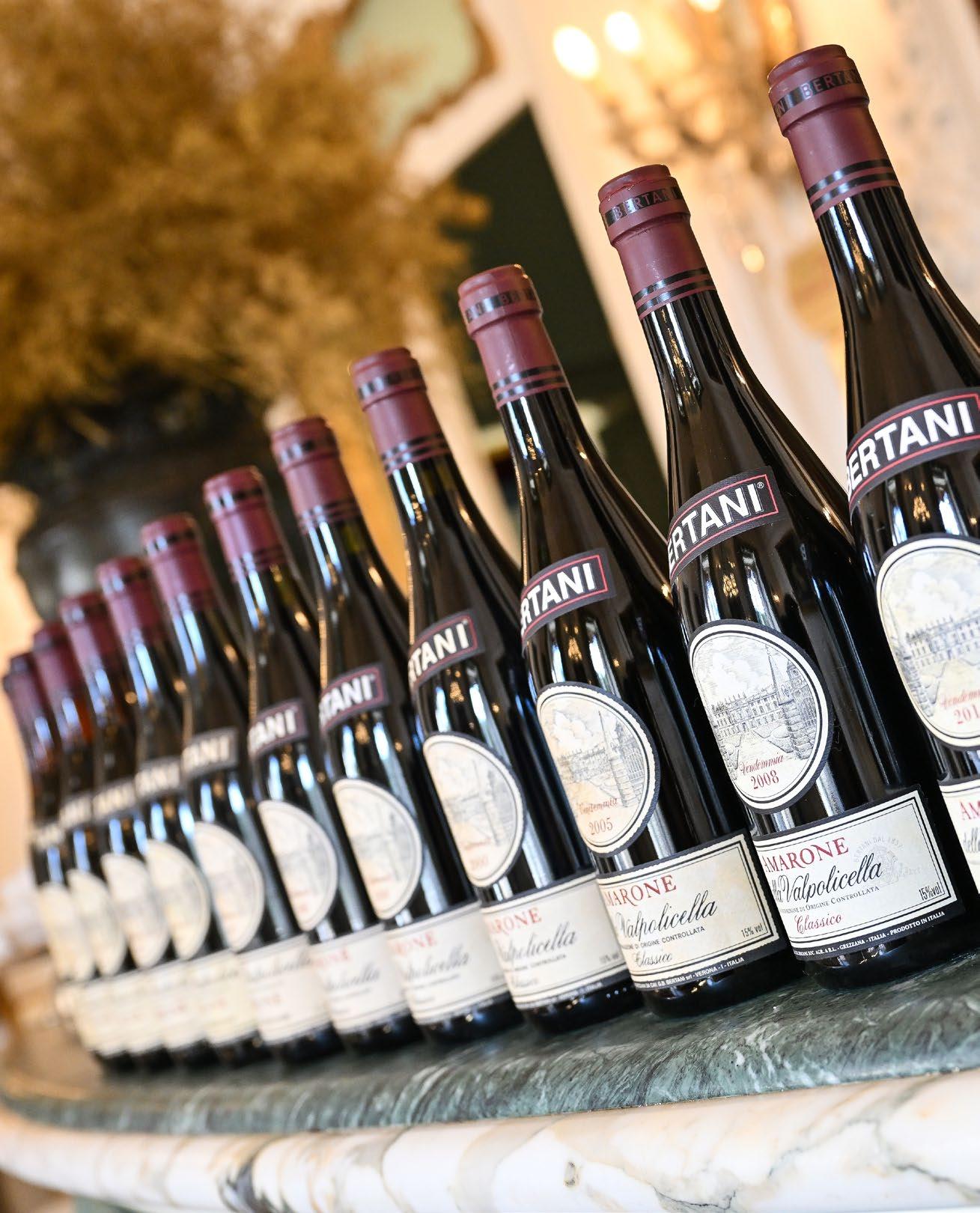
It is one of the most representative Italian wineries, founded in 1857 and owned by the Angelini family since 2011. Over the years it has established itself in Italy and in the world thanks to the undisputed quality of its wines and a very precise idea of Amarone: a link with tradition together with harmony, elegance, refinement and complexity. In Vini d'Italia 2023 the winery won the Special Winery of the Year Award. We tell it through a tasting of 13 vintages along 60 years of harvests
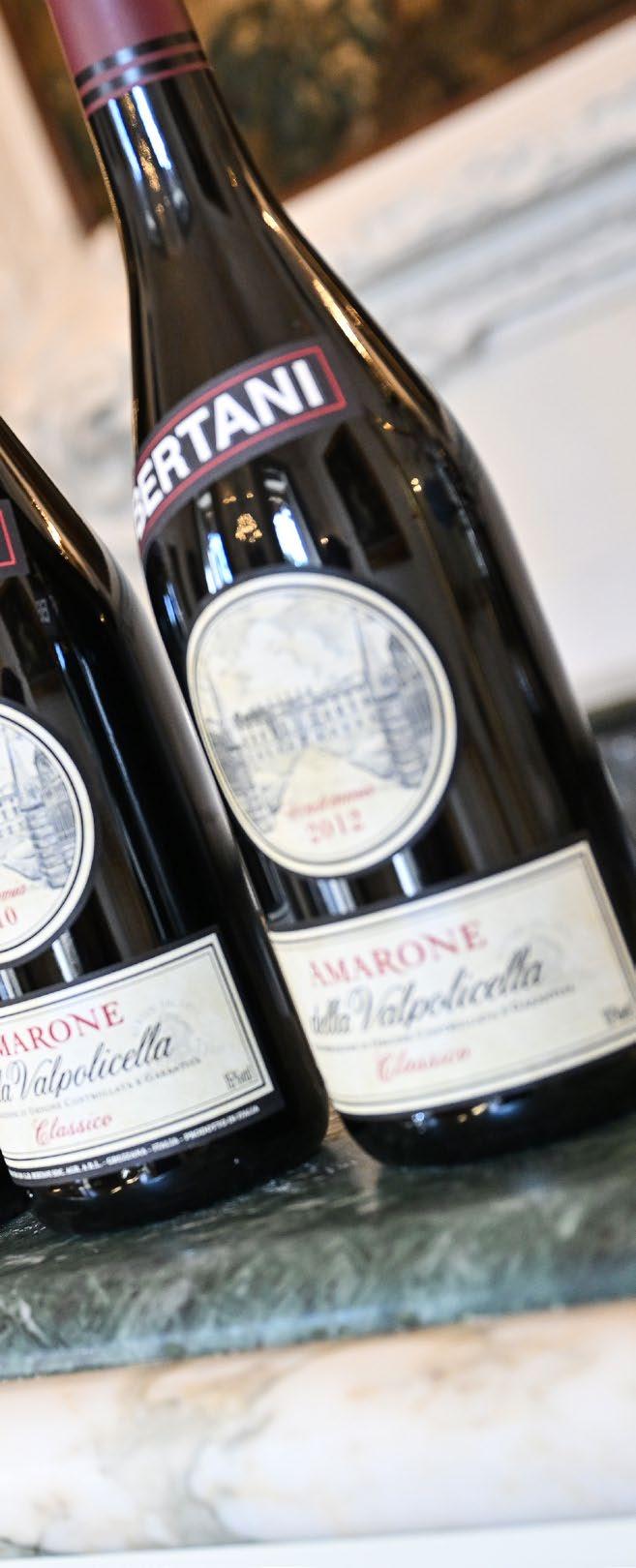 words by Giuseppe Carrus and Nicola Frasson photos by Francesco Vignali
words by Giuseppe Carrus and Nicola Frasson photos by Francesco Vignali
The story of wine cannot be limited to a sequence of aromatic descriptors, of smooth tannins and sharp acidity, of scores and classifications, of selfies with clinking glasses, of winegrowers on horseback and bottling lines. The story of wine is a memory, a journey, an afterthought… The most tempting opportunities to explore the world of wine in this way mostly come from vertical tastings, especially if the sequence stretches long enough over time. Few companies in Italy can afford a tasting like the one that the Bertani winery held a few months ago in the historic premises of the Grezzana cellar, a real journey through time starting in 1958 and ar-

riving in 2013: six decades traversed with a glance fixed on the scenery and on the history observed through the lenses of the Amarone Classico.
The occasion was the presentation of The Library, a valuable publication edited by British Master of Wine Nick Jackson who – in collaboration with Andrea Lonardi and Eleonora Guerini – explored the Bertani universe, presenting the production technique and above all offering an original reading of the 43 vintages of Amarone present in the cellar. The wines are divided into four large groups that seek the deepest soul of the wine, the character more than the organoleptic
1857 – The Bertani company was born by the will of brothers Giovan Battista and Gaetano in the small town of Quinto Valpantena. Among the teachers of Giovan Battista - in the studies of viticulture and oenology - there is even Jules Guyot, to whom we owe the name of the famous training system
1850
1900
1923 – The company receives the Royal Warrant from the Savoy Kingdom of Italy
1937 – Bertani wines are served during the coronation of King George VI in London
1950s – The acquisition of the Novare estate is completed, which includes 65 hectares of vineyards
2022 – The Library volume is released: it traces the history of Amarone Bertani through 43 vintages. The Bertani company wins the Special Award "Winery of the Year" in the Vini d’Italia 2023 guide by Gambero Rosso
2018 – The Bertani Cru project is born, represented by the Valpolicella Classico Le Miniere and the Valpolicella Classico
1958 – The Amarone della Valpolicella Classico Bertani is born, which at the time still bore the old wording "Reciotto Secco
2011 – The company passes ownership from the Bertani family to the Angelini family, already active for some time in the world of wine in Tuscany, Friuli and Marche 2000 1950 1920 2020

description regardless of the climatic conditions of the harvest or of the cellarman employed in the company. Exuberance, delicacy, harmony and refinement are the words selected to identify the stages of this long journey, a key to understanding that this does not attribute an absolute value to the quality of the wine and suggests a more intimate and less scholastic vision of tasting. It is not easy to visualise such a long time, if we think of our life, of the moments we remember as very distant, it is enough to underline that the first wine we tasted saw the election of Pope John XXIII and the last one saw the resignation of Benedict XVI. In between the construction of the Berlin wall and its demolition, the refer-
200 hectares of vineyards
1.5 million bottles olive oil and other productions
65% export share
20 Tre Bicchieri awards
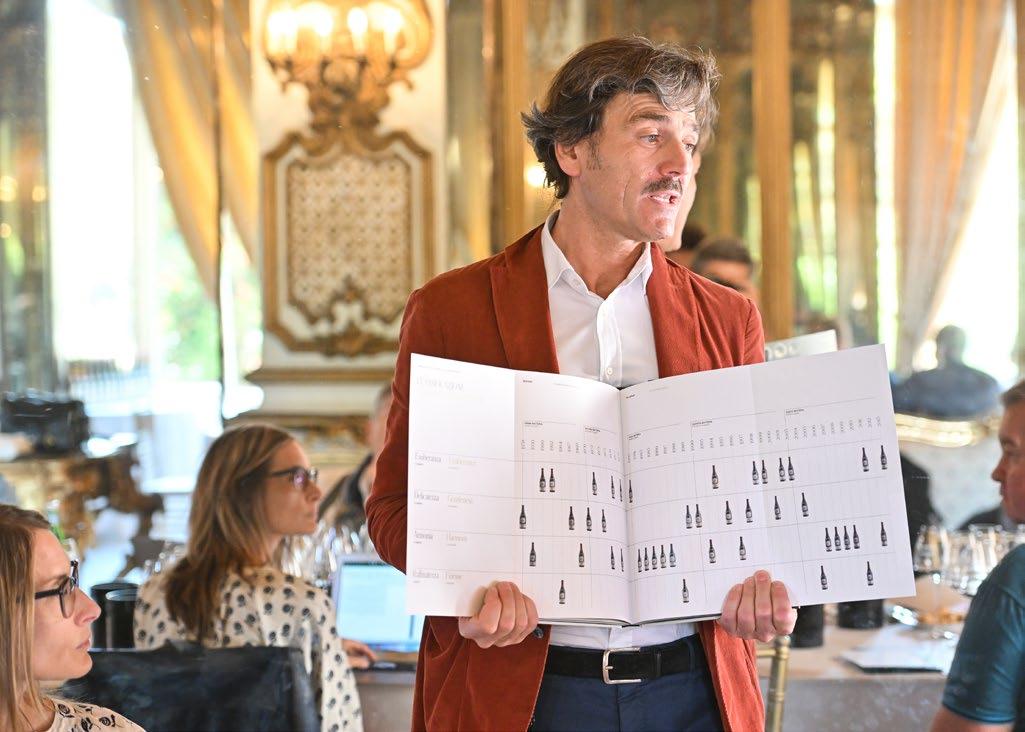
THE LIBRARY. IN 43 VINTAGES, THE STORY OF THE YOUNGEST OF THE GREAT RED CLASSICS OF ITALY
A book that is not a self-celebration but rather a cultural journey through the history of the youngest of Italy's great red classics through the reading of 43 vintages of Amarone della Valpolicella told by Master of Wine Nick Jackson. The description of the technical aspects has been taken care of - which is in-depth and at the same time usable even by non-experts - as well as the presentation of the company, associating the character of the wines obtained with the various vineyards and relative soils. The heart of the publication, however, is the organoleptic and stylistic analysis of the 43 wines tasted, presented in chronological order but catalogued into four large families: Exuberance, Delicacy, Harmony and Refinement which perfectly represent the key elements of the style of each wine. Presented last autumn, it is not an impromptu publication: the company already plans to cyclically explore the available wines, following their evolution step by step over the years, and thus maintain a contemporary and updated reading of the old vintages.

endum on divorce in Italy, Mennea's world 200-metre dash record, the victories of Italy trained by Bearzot and Lippi at the World Cup.
The wines, presented from the oldest to the youngest, were divided into 4 groups for a tasting that lasted about 5 hours interspersed with a quick visit to the cellar which allowed the participants a short break and gave the organisers the chance to replace used glasses.

Il 1958 represents a precise historical moment, with the wine that still highlights the close link with the progenitor Recioto, made of a fleshy and sweet fruit that blends in a soft sip and
which almost seems to recall the profile of a Port more than that of today's Amarone. Then there are the 1959, the 1960, the 1962. It was not yet clear what this wine should become and a decidedly sharp and savoury profile emerged, characteristics that today the most attentive companies try to recover and that Bertani has practically never abandoned, enhancing the talents that traditional grapes possess. 1964 is perhaps the first taste that reveals the enormous potential of this type. It is an Amarone that oscillates between the solidity of the great Bordeaux and the finesse of the Burgundy reds, claiming its territoriality, made up of spices, ripe fruit and dyna-
The success that Valpolicella has had since the mid-1990s has been driven by Amarone which conditioned the style of all the wines of the area that have placed their essence in power. Instead, Bertani maintained a stronger stylistic identity and the path of rediscovery of Valpolicella - and even more of Valpolicella Superiore - found its culmination in Ognisanti '20. The grapes, corvina with a splash of rondinella, come from the three hectares of vineyards of calcareous and sandy soils with exposure to the west above the church of Ognisanti in the Novare estate. The maturation of the wine takes place in French oak barrels for one year, followed by at least six months of ageing in the bottle. The result is a ruby glass, bright and transparent, with a refined aromatic framework dominated by notes of wild fruit, dog rose and pepper. In the mouth it is striking for its tension and agility, perfectly supported by the acidic and savoury skeleton on which tannins of pleasant roughness cling.
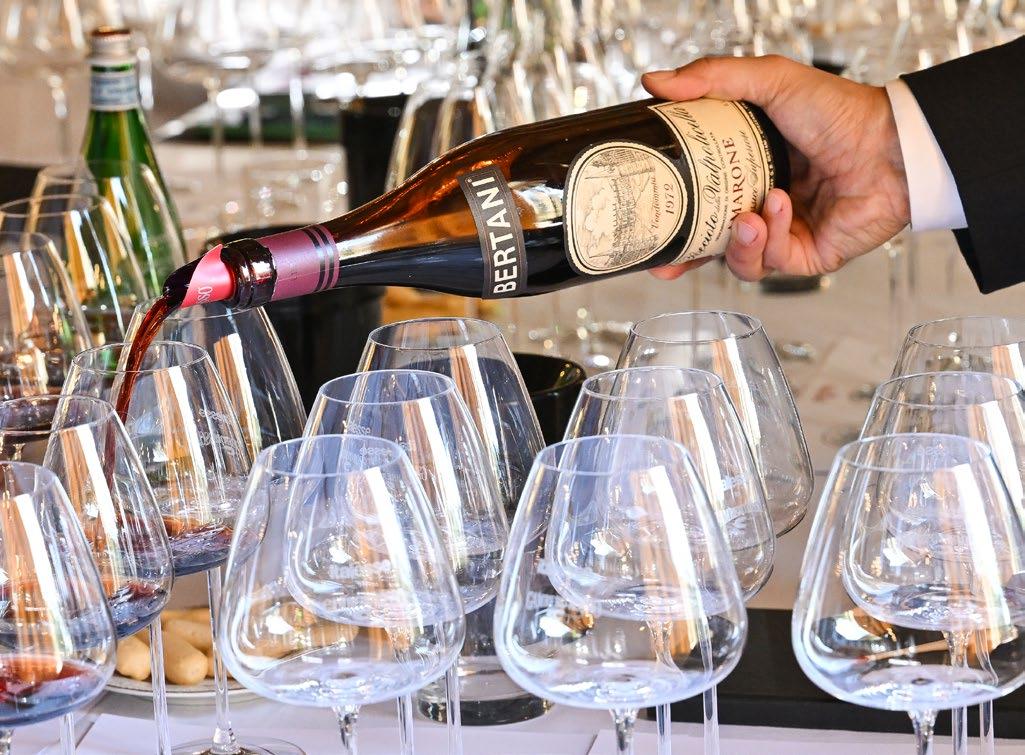
On October 14th, in the presence of several international journalists and critics, we tasted 13 vintages of Amarone Bertani: a summary of the work done by the Grezzana winery from the 1960s onwards. In the tasting notes, next to the vintage, are indicated both the classification based on the lines of The Library (see sidebar) and the year of bottling, which is important for understanding the long maturation that the wine has undergone in certain periods.
The creature of a great vintage, with a dry summer, this wine was bottled 19 years after the harvest. The vitality and energy it shows after 60 years is incredible. Bark, noble resins, citron, vermouth on the nose for a graceful, very elegant mouth, with an incredible drinkability punctuated by

dried flowers and notes of orange and citron on the finish. Fresh acidity continues to show flavour and rhythm.

Bottled 18 years after the harvest which was marked by a very hot summer and thus lending a rich wine, with lots of structure and notes of ripe fruit dominate the nose making it appear much younger than it is. The mouth, in contrast with the olfactory scents, shows elegance, class, gracefulness. A wine with autumnal traits, to be savoured calmly, to still grasp its tannic traits, its acidic freshness and savoury finish.
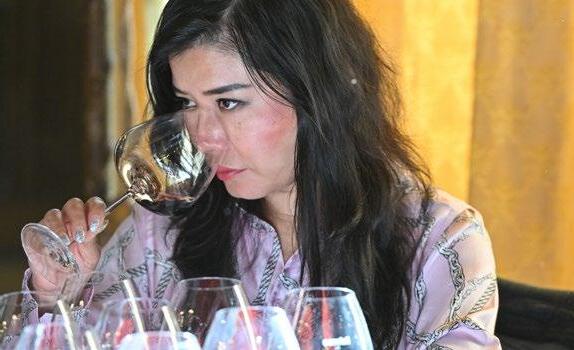

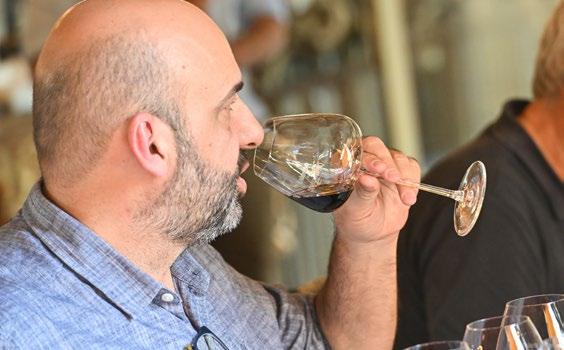
A very hot year, with a torrid August and September with little rain: bottled after 10 years. The colour is very intense and portends a chocolatey nose, at times mentholated, with smoky touches and hints of cedar wood. Then a powerful, creamy, enveloping and round palate, beautiful for its persuasive nature. It's like a cuddle that manages to go deep, without sagging in the centre of the mouth. He still has a lot to say.
mism. Subsequent vintages (1967, 1969, 1970, 1972, 1975) communicate well the maturity of the Bertani of that time, still the result of very long ageing in barrels but which varied from year to year. The wines amaze for their integrity and gustatory freshness, leaving the qualities of fullness and power in the background.
From 1976 to 1983 ‒ (passing through 1977, 1978, 1980, 1981) ‒ we have wines that claim a greater centrality of the fruit, as if they were actually prepared for the great revolution that hit Valpolicella in the mid-1990s. These are wines that seem to lose that air of innocence to gain awareness and are the result of greater attention in the vineyard.
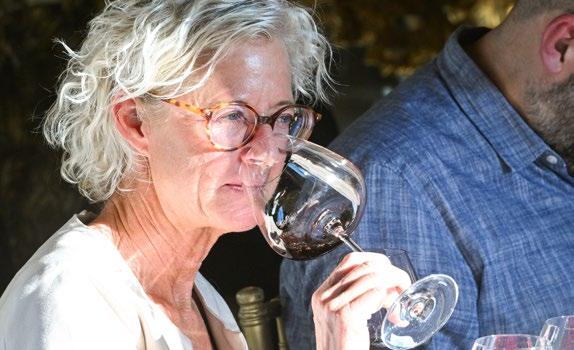



The second half of the 1980s represented the boom of Amarone in the world and somehow the passion for rich, powerful and soft wines that characterised the decades at the turn of the 2000s is also felt in Grezzana. 1993, 1994 and 1995 perfectly reflect the moment of transition that the company was experiencing. They seem to abandon the richness that characterised the immediately preceding harvests and anticipate a series of vintages (up to 2001) that we can consider as an example sanctioning the rebirth of a precise company style: a perfect synthesis between the Bertani style and the current Amarone.
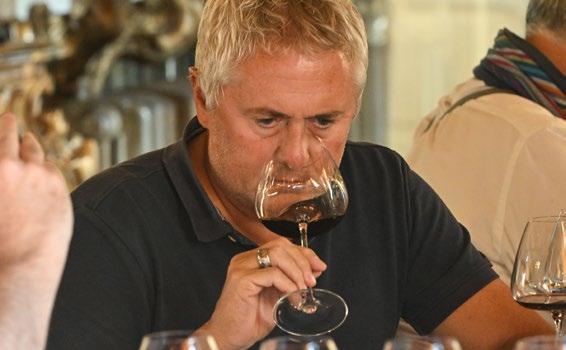

A very hot year, with a torrid August and September with little rain: bottled after 10 years. The colour is very intense and portends a chocolatey nose, at times mentholated, with smoky touches and hints of cedar wood. Then a powerful, creamy, enveloping and round palate, beautiful for its persuasive nature. It's like a cuddle that manages to go deep, without sagging in the centre of the mouth. It still has a lot to say..
Bottled after nine years. Creature of a very hot and dry vintage, it still has lots of energy and communicates it right from the first nose. Pine needles, ginger, iodine nuances, the wine then lends a perfect balance between tannic texture typical of a young wine and freshness that makes it graceful and satisfying to drink. There is also the persuasive and soft part that makes it a tasty, fragrant and delicious wine. The finish has a touch of bitterness, the right measure for the character of a wine that is remembered for a long time.
The 2003 deserves a reflection. Despite the torrid vintage, the wine surprises for its integrity, tension and harmony. It is ripe in its aromas and does nothing to hide it, but it does so with an unexpected grace and gentle demeanour.
The vintages from 2004 to 2011 testify to the slowness with which these wines age and therefore the differences are becoming less and less evident, the character of the vintage emerges more, as does the freshness and unpredictability of 2005 or in the calm sunshine of 2011.

With the 2012 vintage it feels like a new revolution. At first sight it is the usual Amarone from the Bertani house, rich but not exaggerated, restrained in its gustatory dynamics, yet an inner light seems to shine that anticipates a different path. The wine gives itself little by little but is not reticent, it simply obliges greater attention and asks for more time to make itself understood… but then 2013 arrives. Here is the revolution! A new idea of Amarone that somehow exploits the drying process not so much to make the link with Valpolicella and its traditions clear, but rather to explore new gustatory territories. The idea of a wine that
On page 68 and 69, from left to right

top: Ricardo Castilho (Revista Prazeres da Mesa), Lynn Zhou (Global Gourmet China), Alain Kunz (Block Group), Bonnie Rienwald (Din VinGuide).
Bottom: Michaela Morris (Meininger's Wine Business International - Dcentar), Madeleine Stewreth (Master of Wine), Simone FM Spinner (Tasting TableThe Vintner Project - Carpe Travel), Michal Šetka (Wine&Degustation magazine)

Also participating in the tasting, for Gambero Rosso, were Marco Sabellico, Gianni Fabrizio and Lorenzo Ruggeri, as well as Giuseppe Carrus
Bottled after nine years of a complex harvest characterised by cool and humid climate. Forgive the parallel, but tasted blind we would have said Bordeaux, a great Saint-Estèphe. Noble resins, a touch of mint, vegetal hints on the nose that materialise on a dense palate, with still lively and dense tannins, which give rhythm to the drink and project it into the future. A wine of great persistence and with the ideal body and structure for a combination with the great non-seafood dishes of the Venetian tradition.
Bottled six years after a dry harvest, considered good especially for Amarone grapes. Among the younger ones, although more than 25 years have passed since the collection, it seems to us the one that still has a lot to offer in terms of olfactory complexity and gustatory balance. All in all, drinkability is big even today, despite the wine being rich, full-bodied, enveloping and with the tannin as still sharp, ideal for dampening the power. Nose all on the fruit with plum in the foreground.
Bottled seven years after a balanced vintage also thanks to several rainfalls in September which favoured the quality of the grapes. With its 6 grams/litre of sugar it is the "sweetest" of those tasted, but the sugary sensation is not felt in the slightest, rather it is a powerful, concentrated wine with tones of black fruit, spices and tobacco. There is also a hint of goudron that anticipates a dense palate, with still incisive tannins and a mentholated finish. Wine that portends long ageing.
Bottled after seven years. Balanced summer, rainy September, dry weather in October which allowed for a good harvest. Delicate, graceful, elegant and expressive. It is a great example of the Bertani style and you can perceive it right from the nose. Citrus fruits, flowers, a light spicy touch and a mouth of great precision, long and flowing, with the primary part still clearly evident. The length is masterful and its complexity shows it all in the vertical development.
Bottled after seven years. Fair summer, September divided between rains and bright, sunny days. We truly enter in full youth and the last four wines tasted - in parallel with the older vintages - make us understand how much life they have ahead of them. The 2005 smells of sweet spices, red fruit, dried rose, while the mouth is refined, caresses the palate, has flavour and depth.
Bottled eight years after an early harvest due to hot summer temperatures. Very young, especially for the tannic texture, it still needs to be smoothed and blended with the rest of the material. The nose is different, however, which already shows spicy hints, a ripe red fruit and a slight sensation of jam. Nonetheless the sip is fleshy, chewable on the palate, ideal (now) with food, even better if left in the cellar to rest.
manifests its uniqueness right from the first approach was the origin of so much fortune for the denomination but at the same time made it impossible to compare it with the great reds of the world. Instead, Bertani's Amarone Classico 2013 enters that competition through the front door, strong in the territory of origin, the character of the historic grapes and the expertise of a 165-year-young company.
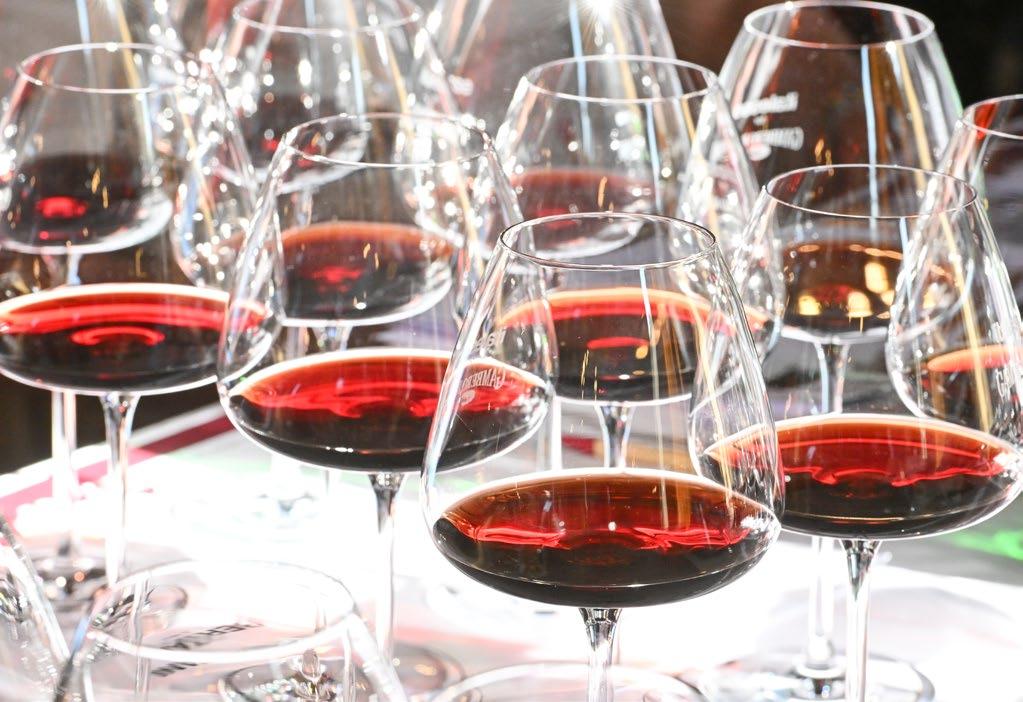
Bottled after eight years. Fluctuating weather in summer but excellent season finale and ideal harvest. A truly multifaceted wine, with a complex nose in which both red fruit and sweet spices are highlighted, but also notes of licorice, dried fruit, soil and bark. Despite showing extreme youth, its harmony seems already complete. The tannin is smooth, the texture is perfectly integrated with acidic freshness and salinity, and all contributes to making the sip agile, pure, perky.
Bottled 9 years after the harvest. The vintage saw an undoubtedly difficult summer, but from the end of August onwards the climate improved and allowed for good ripening of the grapes. What we find in the glass is a modern Amarone, projected towards the future, what we believe can constitute an example for the denomination. In the case of Bertani, it is a classic red, which relies on many things done in the past. The red fruits are crisp, there is a touch of floral and dark citrus. Then freshness, dynamism and rhythm in a still very young sip, but already of great finesse. Tasty and very long, it is very very promising.

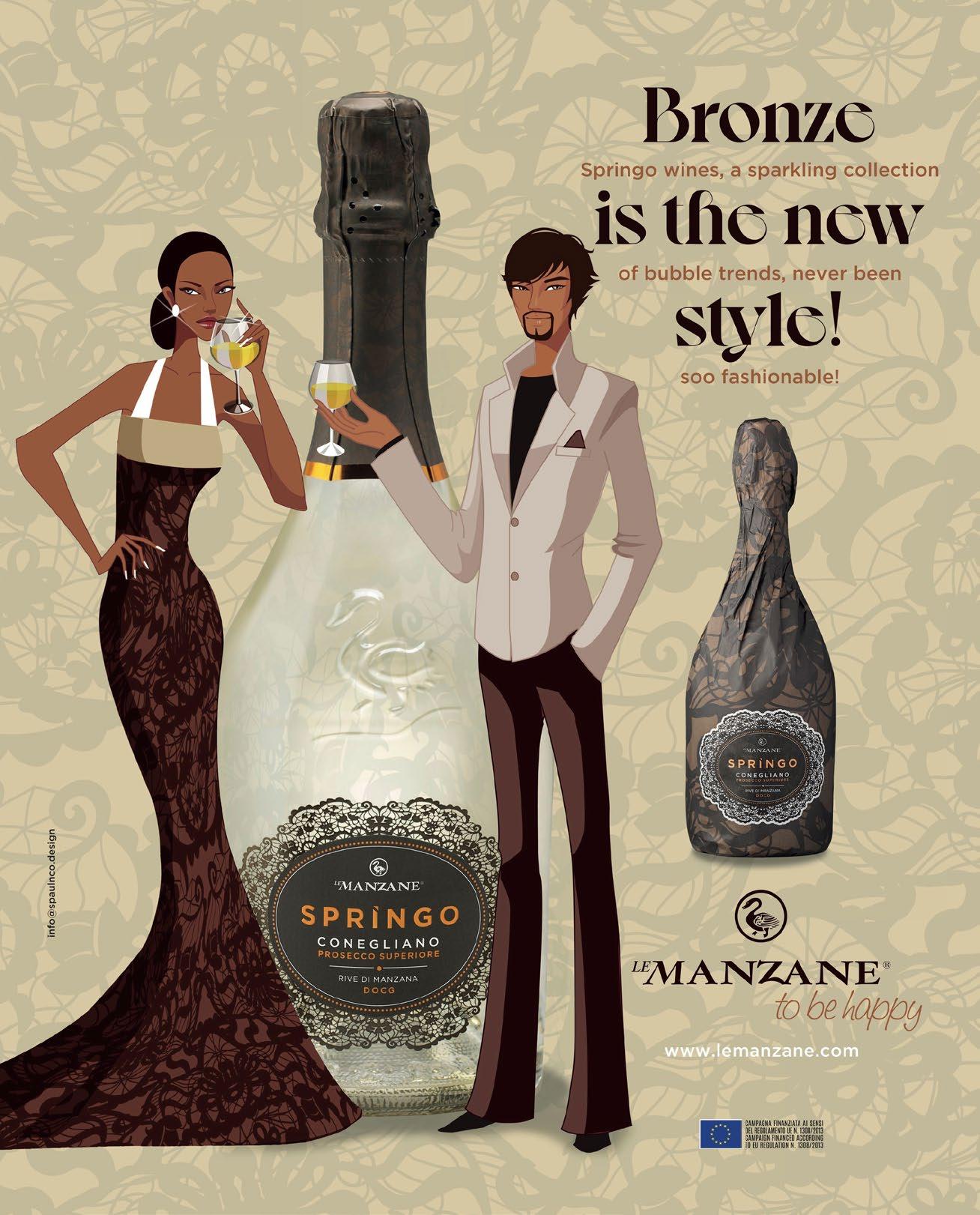
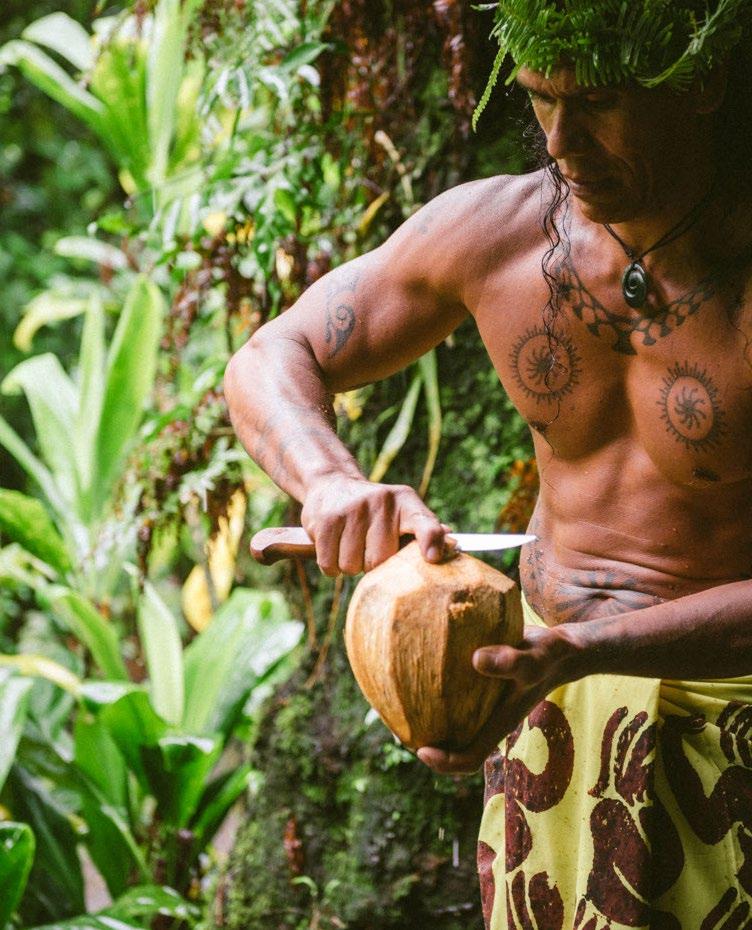
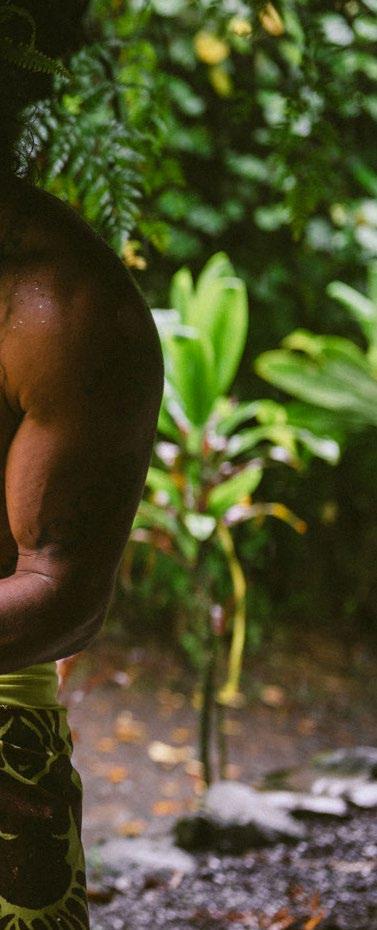
It's a good time of the year to indulge in a dream, actually, to make a dream come true: French Polynesia, with its 5 archipelagos, Tahiti and its capital Papeete awaits to welcome you for a regenerating immersion in colours, scents, flavours all extremely distant from those of "our" world. A paradise in the true sense of the word, and experience it in order to understand what it really means to get away from the noise and rhythms of the contemporary world
words by Giovanni Angelucci - infographics by Alessandro Naldi
Here exist such remote places that we will hardly ever see in our lifetime and that sometimes can only be reached through dreams, but even with our minds it is not so easy to imagine them. One of these is French Polynesia, 16,000 kilometres from Italy (a convenient flight with Air Tahiti Nui from Paris) and divided into five archipelagos: the Society Islands, the most important, made up of nine high islands and five atolls divided into two groups, the Iles du Vent with Tahiti, Moorea, Maiao, Tetiaroa, Mehetia and the Iles sous le Vent to the west with Huahine, Raiatea, Tahaa, Bora Bora, Maupiti, without forgetting the uninhabited islets of Tupai, Mopelia, Scilly and Bellinghausen. The Tuamotu archipelago, often associated with the Gambier archipelago, which includes
low-lying islands and atolls such as Rangiroa, Tikehau, Manihi, Fakarava and many others that are worth a visit; the Austral archipelago with its five islands Rurutu, Tubuai, Raivavae, Rimatara and Rapa at the southern end of the Pacific Ocean, and the Marquesas archipelago formed by twelve high islands and without lagoon.
Here you can enjoy the most spectacular waters in the world, enriched by a frame made of high mountains, a unique landscape, to be clear the same one that appears on the billboards of travel agencies and for which it is worth taking on a day's flight. But that's not all, arriving in French Polynesia also means immersing yourself in unique cultures that are very far from ours. «We Tahitians have inherited a rich and expressive culture from our Ma'ohi ancestors, from them derives the life force, a world where the lives of gods, war-
riors and men intersect in exciting legends. Mana is the sacred power that embraces the Islands of Tahiti and their people: you can see, hear, touch and taste it,» said the elderly taxi driver who drove us to the hotel.


We need to come down here with a pure heart, to welcome wisdom and harmony, to discover the Mana that dwells in each of us and to understand what this superior entity that Polynesians often talk about is. Welcome to paradise, let's go.
French Polynesia enjoys excellent weather conditions and is therefore truly a haven of abundance. In this country perpetually kissed by the sun, farmers grow an enormous variety of fruit, spices and
vegetables with evocative names that refer to exotic places, highly appreciated by consumers as they combine aromatic and nutritional qualities: the legendary breadfruit tree (or uru), coconut, dozens of varieties of banana including the inimitable fe'i, plus papaya, mango, pineapple, watermelon, grapefruit, lime and vanilla, numerous vegetables such as taro, tarua, ufi or 'umara are the basis of island cuisine.
But what is there to savour in the Islands of Tahiti? Being an overseas country of the French Republic, its gastronomy is mainly based on French cuisine, but with a blend of Asian and Western flavours. As a matter of fact, although it is not widely known, Chinese immigrants have a long history in the Islands of Tahiti, and the Hakka who currently live there are considered third and fourth generation immigrants. Therefore, the
influence of Chinese food culture is one of the essential elements of Polynesian cuisine.
Fish from the lagoons or the ocean, from dolphinfish perch (mahi mahi) to parrotfish from the Tuamotu Islands, are all part of the typical Polynesian menu. They are often eaten raw, marinated in lime juice or coconut milk like the famous raw fish recipe "à la Tahitienne." All the most typical foods are cooked in traditional Polynesian ovens, called ahima'a, where fruit, vegetables, pork, Tahitian chicken with fāfā (local spinach) and other delicacies come together in the ancestral slow cooking tradition. Preparations sprinkled with fresh coconut oil which makes everything incredibly creamy and enhanced by the possibility of eating on the beaches or on

Ahi: fire
Ahima’a: traditional ovens dug into the soil and covered with stones and banana leaves
Bancoulier: aka Aleurites moluccanus, a tree of the Euphorbiaceae family. Used as condimentceae. Si usa come condimento
Fe’i: banana variety
Fafaru: sea water used as a condiment
Hakka: Chinese people of the Han ethnic group who live in southern China but who have emigrated to many countries. The name means: invited families
Mā’a: food
Mā’a Tahiti: traditional cuisine, composed of three elements: a base of vegetables (mā'a), fish or meat ('īna'i), sauce of coconut milk or sea water (miti)

Mituhue: fermented coconut milk
Mana: the sacred spirit of the island that envelops everything
Motu: islets
Taro: aka Colocasia esculenta, ornamental plant with edible rhizomes
Ufi: edible rootsi
Ukulele: Hawaiian musical instrument of the guitar family (invented by Portuguese immigrants in the 1800s)
Uru: breadfruit
1 Poisson cru

Poisson cru is a blend of freshly cut fish (usually tuna), vegetables and coconut milk. Refreshing and tasty.
2 Bonbon Chinois
When eating an unripe mango, Polynesians sprinkle it with a red, sweet and sour Chinese powder that contains Chinese plum extracts. It is locally known as "bonbon chinois.".
3 Fafaru
Tuna marinated in fermented sea water for a few days in the sun together with prawns and crabs. Fafaru is actually fermented water.
4 Suckling pig
Protagonist of the banquets and cooking paired with fruit and vegetables that take place in the ahimā'a, the traditional oven dug into the ground.
5 Chicken with local spinach
The tasty and small-leafed Polynesian spinach is called fāfā and, together with the delicious meat of free-range chickens, you get a rich and satisfying dish.
6 Bananas with cassava and taro
One of several different ways to use bananas, in this case creating a cold and well-balanced salad
7 Breadfruit
Known in different parts of the world, breadfruit lends flavour and energy, among the various Polynesian versions, there is the one cooked over coals which makes it soft at the core and smokey on the outside.
7 Raw fish salad with coconut milk
Omnipresent, colourful, fragrant, it uses numerous ingredients and everyone prepares it in a different way. Contrary to what you imagine, coconut milk does not give the dish a sweet taste but rather an overall harmony.
the motu (islets) soaking your feet in the crystal clear waters.
Traditional Polynesian cuisine (Mā'a Tahiti) consists of three elements: the base of the dish made of vegetables (mā'a), fish or meat ('īna'i) and a sauce of coconut milk or sea water (miti).
For most citizens of French Polynesia, the daily use of ahimā'a has largely been abandoned in favour of more modern convenience, yet holidays are almost always characterised by this original Polynesian tradition of preparing banquets. Ahimā'a is composed of the Tahitian words "ahi," which means fire, and "mā'a," which means food. Prep starts early in the day – sometimes several hours before dawn – by digging a deep open pit then filled with firewood and large basalt lava rocks. When the fire
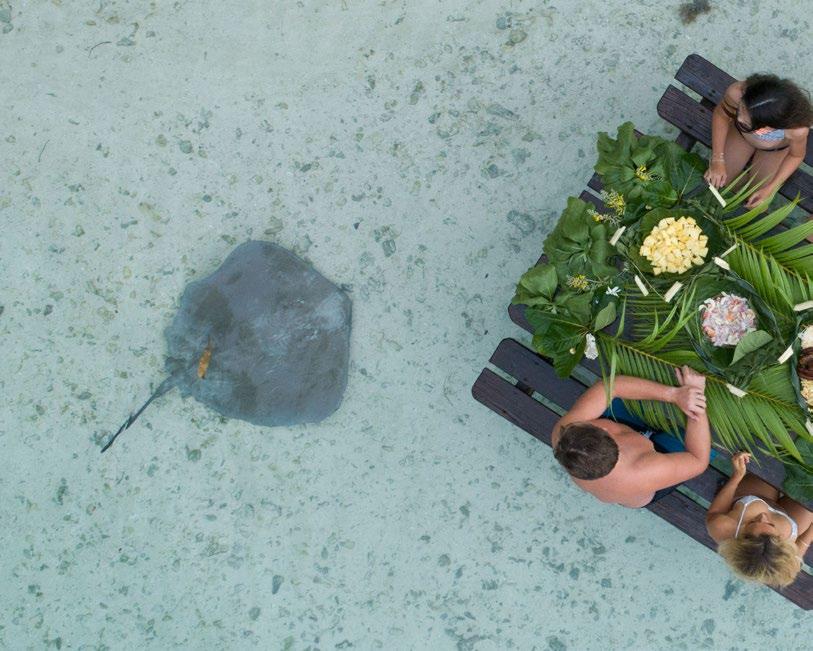
has been lit and the temperature has reached several hundred degrees, large banana leaves are waved over the stones until they wither; then, carefully and meticulously, the stems of the leaves are removed and placed across the burning stones to distribute and regulate the temperature of the oven. Finally the food is placed inside, often a whole pig, a chicken, some taro, fish or prawns which, after cooking for at least four or five hours, the party starts, with songs and dances to the rhythm of the ukulele to consecrate the celebration of the ancient ritual (forget cutlery).
Usually travellers arrive in Tahiti with international flights and immediately move to the most famous islands but even here in the lively capital Papeete there is precious time to spend. Of volca-
nic origin, it is crowned by a circle of majestic peaks including Orohena (2,241 metres) and Mairenui (1,300 metres) which descend towards a frame of very fine sand and a coral reef immersed in the crystalline ocean; the island of Tahiti is the largest and most modernised. Its mountainous interior is adorned with valleys of a mystical impact, clear streams and high waterfalls. Most of the island's population resides near the coast, leaving the interior almost untouched despite its proximity to Papeete (meaning "water basket"), once a gathering place where Tahitians went to fill their gourds with fresh water. Today Papeete, the cornerstone of this island nation, boasts resorts, hotels, spas, restaurants and markets. With whom shall we discover the wonder that surrounds the city? Our journey to discover Tahiti begins in the best possible way: the first
1. Papeete, the capital of Tahiti: the Polynesian town is the lively arrival point in Polynesia (photo by Grégoire Le Bacon)
2. A plate of "salad" prepared inside a coconut with fish and local roots (photo by Grégoire Le Bacon)
3. Tourist lunch in Moorea (photo by Tahiti Fly Shoot)
4. A local fisherman shows the fruit of his labour which will go into fresh raw or seared fish dishes (photo by Grégoire Le Bacon)

In the opening, fresh coconut (photo by Myles McGuinness)
I was born in Tahiti but I studied in France. My passion for cooking began as a child, when I spent my days in the kitchen with my mother, also a chef. For me, the main market is the sea, from where I find a large quantity of fish and shellfish of incomparable quality and freshness: from when the fish is caught to when it is served there is a time frame of only two hours. I only use the catch of Rangiroa that I invite everyone who comes to visit me to discover. Lately I've been working with my team to present guests with triggerfish ("Oiri" in Polynesian) using its liver as if it were foie gras. It's hard work, because this fish is very fatty, with a strong taste that few dare to try. But I am very attached to this dish that has always been in my culture. In Rangiroa coconut is used a lot, omnipresent: to make milk, bread and to flavour various dishes. Furthermore, the typical Polynesian flower, the tiare (aka Monoi), is used to make perfumes, essential oils, jams and sorbets.
– Eric Rousseau, chef at The Hotel Kia Ora Resort & Spa in Rangiroa


Tahiti
Tahiti Pearl Beach Resort
Ārue – Lafayette Beach – letahiti.com
Hoanui restaurant
Teva I Uta - 6HG3+7QJ –fHoanuiRestaurant
Les roulottes de Vaipoopoo Vaipoopoo place – Punaauia –fpunaauia
Papeete marke Papeete – BP4588 – ville-papeete.pf
Manava Suite Resort Tahiti BP 2851 Punavai – Punaauia manava-suite-resort-tahiti.com
Taapuna Tahiti restaurant Punaauia – temoanatahitiresort.pf
Manutea Tahiti Moorea – Maharepa 98 – rhum-manutea. com
Hotel Sofitel Kia Ora Beach Moorea – Îles du vent – all.accor.com/ italia
Taha'a
Le Taha'a Island Resort & Spa Pātio – Motu Tautau – Îles du vent letahaa.com
Pari Pari domain Tapu'amu – Îles du vent –domaineparipari.com
Pearl farm "Love Here" CG83+FVJ – Pātio
Bora Bora Pearl Beach Resort and Spa
Hotel Bora Bora Island – Vaitape Po Box 169 – Îles Sous-le-Vent leborabora.com
Hotel Kia Ora Resort & Spa Avatoru – hotelkiaora.com
Picnic on motu Pa'ati
Dominique Auroy Estate 367X+CFG – Tiputa – vindetahiti.com
Hotel Kia Ora Resort & Spa
Dominique Auroy Estate
Picnic on motu
Bora Bora Pearl Beach Resort and Spa
Pearl farm "Love Here"
Le Taha'a Island Resort & Spa
Pari Pari domain
POLINESIA FRANCESE
Tahiti Pearl Beach Resort
Manutea Tahiti
Hotel Sofitel Kia Ora Beach
Papeete market
Les roulottes de Vaipoopoo
Manava Suite Resort Tahiti
Taapuna Tahiti restaurant
Hoanui restaurant

One of the largest vanilla-producing countries in the world is French Polynesia, albeit originally from Mexico. Here coconut trees that are present all around the plantations maintain the humidity and are also used to fertilise after producing compost. The plant grows like ivy, the varieties are tahitensis or hybrid. For the vanilla harvest, the "bunch" is cut, as if it were a grape: a tree can produce between 1.5 and 2 kilos of pods. On the plant, the pod has no smell: you have to wait for it to turn black to perceive the strong aroma. It does not need much water and for this reason a higher ground is preferred so that drainage is better, such as for grape vines. Drying takes place in the sun and in the shade. The pods are placed on sheets spread out on boards to facilitate transpiration. Drying in the sun takes one to two weeks, while drying in the shade lasts more than a month. Within 14-30 days the pod loses weight: at this point they are worked manually to flatten, straighten and to favour the release of the perfume. From this moment the vanilla is ready for use. It is kept in glass vials with a little alcohol (rum in this case) so that it can be used even after 5-10 years.
From the less aesthetically pleasing, but equally tasty pods, vanilla powder is also produced; a paste with a high concentration of aroma and flavour, or the extract obtained with alcohol and water.
meeting, the one with an unforgettable imprint, is with Olivier Lenoir, better known as Ti, a great connoisseur of his own land who venerates and respects it like a second mother, and who allows us to discover it thanks to authentic tours with his organisation "Iaorana Tahiti Expeditions." You cannot wish for a more authentic, wise and wild travel companion: Polynesian culture will keep you internally and out. So we depart, barefoot, in the heart of Papenoo Valley for a 4WD tour to central Tahiti, following the road along the valley and the Papenoo River, crossing the mountains and enjoying the view of Lake Vaihiria, reaching the other side of the island to discover the extinct volcanic crater of this part of the island. This is an area full of myths and legends, in the heart of the island the points of interest are scattered along the way and there Ti makes numer-

ous stops to show us the majesty of his land, including lunch in the «middle of the (wonderful) nowhere», as he poetically tells us. However, one cannot fail to visit the Papeete market, the beating heart of the country, where you can meet those locals, tasting its most authentic flavours. The municipal market founded more than 170 years ago, called Le Marché, is the perfect place to shop among hundreds of stalls filled with handmade Tahitian items, oils, vanilla, fruits, flowers and instant concoctions. The perfect place to find the unimaginable from all over the islands. Open every day, it's especially colourful and lively on Sunday mornings when residents refuel for family outings: it's located two blocks from the oceanfront and an easy taxi ride from any resort.
What about food trucks? In the evening, but especially on Sundays after sunset, travellers can visit the so-called trailers. When you've had enough of raw fish and coconut, all you have to do is ask around where you can find the famous and lively trailers, the Polynesian version of food trucks that animate the central Place Vaieté and attract visitors and residents for a bite in company. Starting from dusk, many Tahitians and tourists gather here and share the smells and flavours of the square: Chinese food reigns supreme, the large Asian community makes it almost a national cuisine. But poisson cru (raw fish, often marinated), hamburgers and steaks with chips can also be found here. You can taste several specialties from one location to another and chat in a very spartan, cheerful and totally
convivial context in the squares, outdoors, where it's always very pleasant to hang out.
The journey in the huge French Polynesia continues… and you have to make careful choices unless you have months to tour it far and wide.

Destination Moorea, not far from the capital, which magically rises from the ocean like a cathedral. Tall and greenspired, crowned by clear clouds and graced by the South Seas, pastel houses surrounded by hibiscus gardens and colourful birds that give a sense of peace. Moorea's beauty is unforgettable: the fertile valleys are home to plantations of sugarcane and pineapple (where a visit can be arranged, even by bicycle), one of the country's main exports,
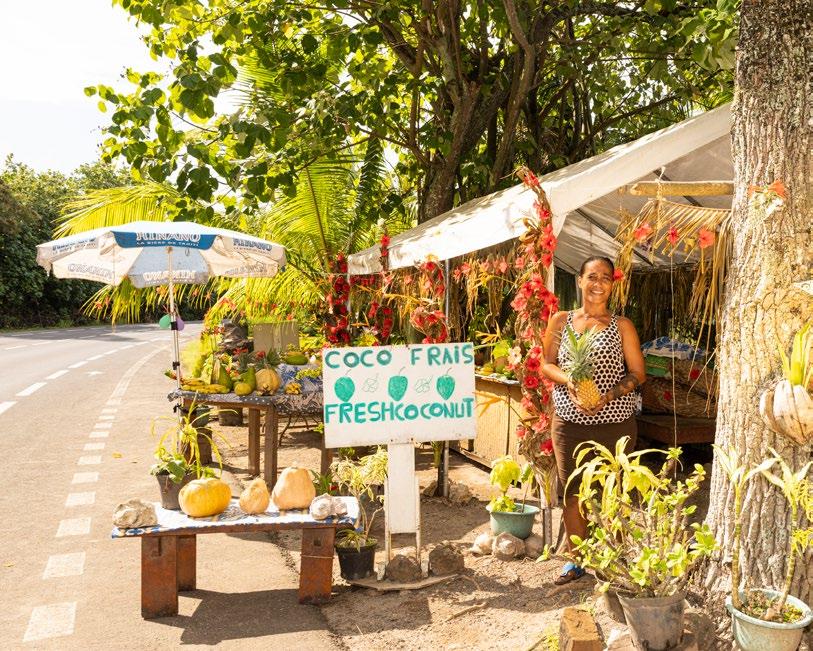
considered by many to be the sweetest variety of pineapple in existence. The products of these crops can be tasted in village shops, in the street side stalls along the road or in the tasting points of the fruit juice producers. Here the point of reference is Maui Ciucci, a Polynesian with an Italian father, owner of Corallina Tours, (whose payoff is "explore, dream, discover") with experiences to be chosen to devote oneself to the exploration of marine life and the lagoon, as well as to discover the few and authentic habits of the population such as the daily stop for the popular Casse-croûte chow mein, the sandwiches that are only found here made of Chinese noodles, French baguettes and the Tahitian genius who brought them together creating the tasty combo of carbs on carbs.

5. Precious vanilla pods of which French Polynesia is among the major world producers
6. A coconut carved with a machete and ready to drink (photo by Grégoire Le Bacon)
7. A fruit stand in Moorea (photo by Grégoire Le Bacon)


8. Pineapples

9. An evocative image of Bora Bora, perhaps the most famous island in Polynesia (photo by Grégoire Le Bacon Tahiti Nui Helicopters)
It takes 18 months to collect pearls and even waiting that long does not mean that we will find one inside the animal. To extract them, the shell is gradually opened with a special tool and a hidden compartment is reached in the centre of the mollusk. Once the pearl is found, an incision is made, it is removed and studied: if it is of good quality, it is measured next to a white seed and this will be inserted into the oyster to generate a new gem, within our oyster farm. When an oyster produces a poor quality pearl, it is eaten. How to recognise the pearls to use? Simple: they must not have any imperfections. The "bad" pearls are used to decorate, but are not sold to the public. The Polynesian oyster (Pinctada Margaritifera) can produce pearls of 178 shades of different colours. When an oyster is no longer used, the islanders eat it with a little lemon juice or in the form of carpaccio with fruit (korori)… it is delicious! But perhaps the best way to absorb the soul of the Polynesian ocean, its true essence, is to eat it pure. The rest of the animal is used for fishing and the shell for crafting items. .
Then appear the islands of Raiatea and Taha'a which, as we have already mentioned, are often associated due to their proximity to each other, surrounded by the same barrier and the same lagoon. With a 45-minute flight from Tahiti you can reach Raiatea and from here Taha'a is connected with a 30-minute ferry crossing. The first has "the heartbeat of the Islands of Tahiti” that comes from a special place, the sacred Taputapuatea Marae: it is from here, from this site of Raiatea, that the expansion of the Polynesians throughout the Pacific began. After offering blessings through sacred ceremonies and celebrations, they ventured north to Hawaii and west to New Zealand. Raiatea, meaning "distant paradise" and "sky of soft light," was initially called Havai'i as it was considered the homeland of the ancient Polynesians. Recognised as the most sacred island in the region, it welcomes us with its mountains covered with trees and green plants that reach the highest peaks such as Mount Temehani. On the island of Taha'a life slows down (even more): charming and peaceful, it catapults us into the peaceful existence of Polynesia, made up of tiny motu and bright white sand beaches that surround the flower-shaped island. The air smells of vanilla that the winds carry along roads and villages starting from the farms that cultivate the much appreciated plant here: one realises that one has reached Taha'a due to the smell that the sweet spice spreads, even before seeing the profile on the horizon. But even sugar cane arrived in these parts well before it arrived in the Caribbean and it is not difficult to find local rum labels on the shelves: one of the best distilleries is right here, the Pari Pari in Tapuamu bay. Every year it produces more than 6,000 bottles: the production is in the hands of an all-female team and the rums, espe-
Winemaking in Polynesia is hard to imagine, yes, but absolutely possible. It's not an easy job, it took a lot of trial and error. In actual fact, 25 years ago they tried to plant more than one hundred varieties and nowadays the focus is on just three: Carignan, Italia and Moscato di Amburgo. These grapes are planted in soils where the presence of coral predominates (they are close to the coast) and causes them to be calcareous soils which give good acidity. The production mainly revolves around white and rosé wines and we are experimenting with the sparkling process. The production of red wines does not exist because there is not enough sunlight for the grapes to reach the necessary maturity: here the sun goes down at six in the afternoon. A peculiarity of Polynesian viticulture is that the vines are ungrafted and that the grapes are harvested twice a year. The trend of using amphorae has arrived here too and we are experimenting with a couple of terracotta vases. There are four wines found in this cellar: the Corail, a fresh and fruity white, the rosé Nacarat, the Clos du Récif, Carignan vinified in white (which ages in barrels and holds up well for up to ten years) with tropical aromas of mango and papaya but with mineral notes given by the corals, and the light Monamona made from Italia and Moscato di Amburgo grapes. All these wines are mainly sold locally, although 10% are exported mainly to France. If desired, they can also be found in Italy.

cially the white ones, are worthy of note. Not only quality, but also a little history that has taken shape since, 16 years ago, the bet was made to set up a distillery in the flat calm of Taha'a: jobs were created and the name of the island has had way to travel around the world thanks to the personality of its distillates. Trust the young Hiti of Tahaa Tour Excursion to discover this territory in the most genuine way there is, complete with a family lunch and breadfruit roasted on the coals.

Could we not mention Bora Bora? Polynesia's most famous island, prized by romantics worldwide for its lush tropical hillsides and hibiscus-blooming valleys of Mount Otemanu, features palm-lined motus, perfect white sand beaches, blue
waters where tropical colourful fish animate the coral gardens and giant manta rays glide gracefully. This South Pacific island could easily be defined as the centre of the romantic universe, where luxury resorts and spas dot the island with overwater bungalows, thatched-roof villas and a fairytale setting. In a nutshell, Bora Bora is one of the most beautiful islands in the world to be discovered through legends, ukulele sound, gardens with trees, fishing and native plants such as coconut, banana, bancoulier, pandanus. It is here that we had the opportunity to try one of the most ancestral flavours of Polynesia, fafaru: tuna marinated in sun-fermented sea water together with prawns and crabs for a few days... overcoming the first olfactory impact you discover a unique and above all local flavour. Finally Rangiroa, the largest diving destination in the world, with its 240 islets
– Sébastien Thépénier, owner of Dominique Auroy Estatelined up in the ocean for more than 177 kilometres. It is beyond imagination, the second largest atoll in the world, a place where land and sky form an unexpected symbiosis. The beautiful circle of islands is surrounded by different types of ocean, Moana-Tea (Quiet Ocean) which defines the lagoon, and Moana-uri (Wild Ocean) where whales, manta rays, dolphins and sharks parade among the lucky travellers who explore their world. Along the few streets that exist, there are 58 coral churches, handicraft centres, local restaurants, bakeries and small shops. But this is also a land of wine – yes, you got it right, wine on an atoll in the Tuamotu Archipelago: the Dominique Auroy Estate is inside a coconut plantation, where the French property, headed by oenologist Sébastien Thépénier, produces "Vin de Tahiti" using the Carignano grape (of Italian origin), Moscato, Am-
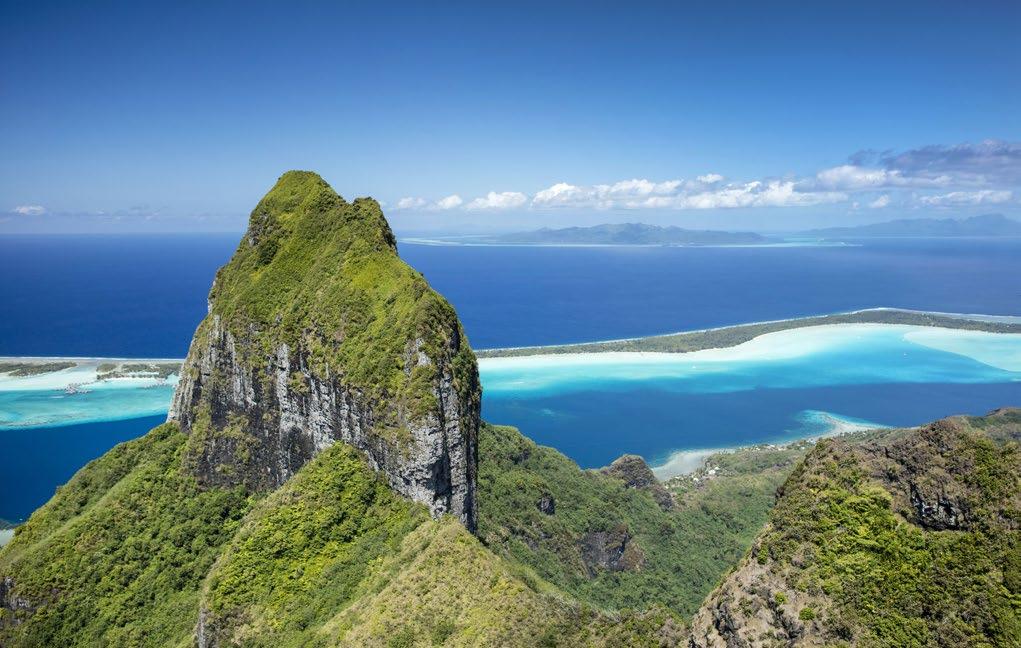
burgo and Grenache varieties, harvested twice a year in May and December. This is the only place in the world where grapes are planted in the coral and its debris which release particular characteristics with mineral and flint notes and taste-olfactory profiles different from those we are used to but that are very interesting. There are four labels, three white and one rosé, wines made by Jacqueline, in charge of the vineyard, by Landry and Lucien, by Rootoroa, Temarii and by Naomie: Polynesians who have brought a little of themselves on this adventure among the rows. And it is precisely here that our journey ends, in the unforgettable Rangiroa.
We leave the island returning the farmer Ioanne to his slice of pristine paradise who bids farewell as our ferry takes off.
He lives on the southern slope of Rangiroa whose meaning is "infinite skies," he lives here together with his life partner and works exclusively on the production of coprah (dried coconut pulp for the food and cosmetic industry) which once a month someone passes by to pick up. Thin, marked by the sun, far from "civilization," a small boat, a machete, thousands of palm trees, zero electricity, no noise or voices and a work of art that appears new to his eyes every day, the majestic beauty of French Polynesia. This is perhaps the truest experience that we will carry with us, the smile of a man who has only two teeth left but who really lives in paradise, and it's all for himself. We wonder if he realises it. We ask him what the sky is like at night, here where there are no lights: he replies with a smile, a smile we will forever miss.

Born in 1959, Giancarlo Morelli is native of the Bergamo countryside, he studied hotel management and immediately embarked on oceanic cruise liners between Europe and the Americas. He followed the teachings of the "new" France masters, from Loiseau to Troisgros via Verger and Ducasse. He opened his first "real" restaurant in Seregno, travelled and got to know the immense Peruvian biodiversity that fascinated him. In 2017 he opened his own restaurant in Milan. «And finally – he smiles – I felt free to cook as I like. I like to feel (and savour) the freshness of a slice of fish, the succulence of a meat, the creaminess of a dessert. It's a joy to live and cook like this.»

WHERE POMIROEU
GIANCARLO MORELLI
Seregno (MB) - via G. Garibaldi, 37 0362237973 - pomiroeu.com
SCORE IN THE 2023 GUIDE
Cuisine 44
Cellar 16
Service24
Total 84
YEAR OF OPENING 1993
by Stefano Polacchi – photos by Stefania GiorgiThe idea was born during the competition Risotto of the year 2009 "Premio Gallo". The idea was to tell Italy by combining great ingredients from North to South; unique flavours, from Piemonte black truffles to Pavese rice and Cilento ricotta di bufala, extra virgin olive oil from Tuscia and Campania's own anchovy colatura and Mazara del Vallo prawns. A dish that won and is still the most loved by my guests today: I could never take it off the menu

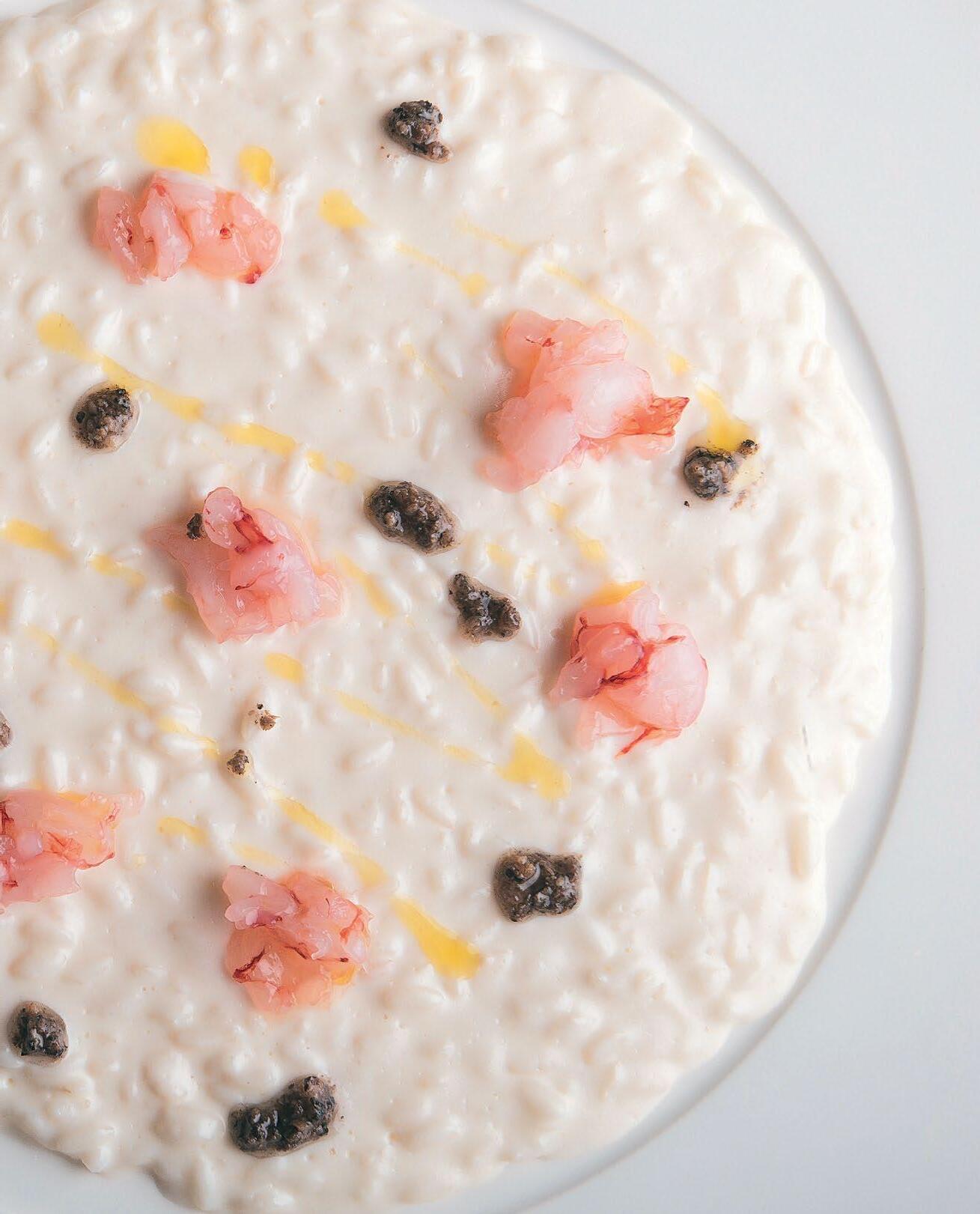

I love giving life to ingredients that are usually considered second-class and less noble than others. When morro cod is served to my guests, I always notice their great amazement which involves all the senses, recreating in them a historical memory of a timeless dish. Obviously, great technique is needed both in cooking the fish and in making the meunière sauce, to balance out the flavours and create equilibrium that makes this dish an identity of me.
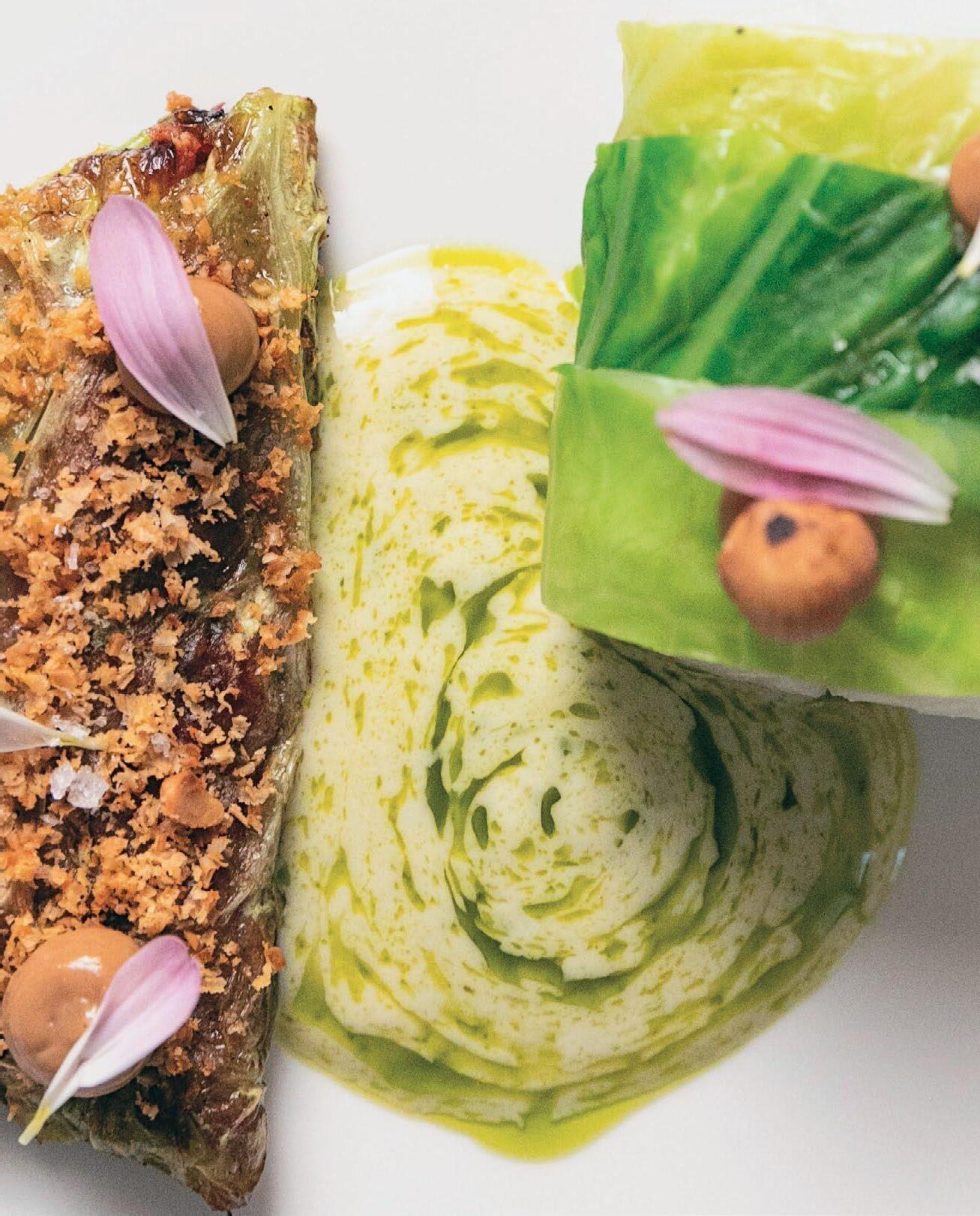
My training as a cook started from the foundations of French cuisine. I love to offer large desserts that are pleasing to the eye, but above all that leave an impression for their goodness. The tarte tatin is always present in my menus, the fruit used alternates according to the seasons. I really care about it: it must always be crunchy and enveloping, with the persuasive notes of vanilla in front of which diners can't wait for (and I can't wait for either!) to combine them with the creamy dark chocolate of which, I have to be honest, I'm literally crazy about.
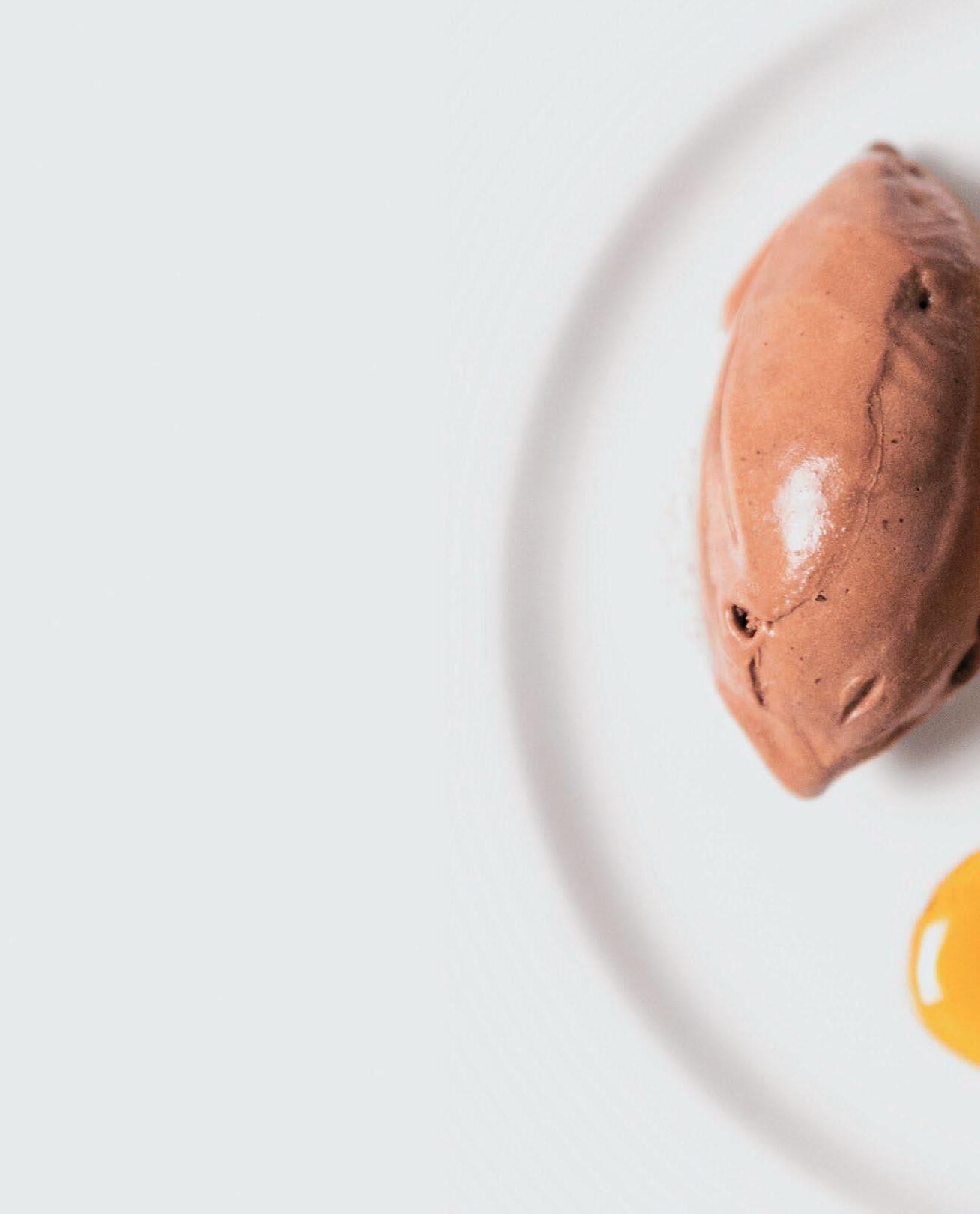

GAMBERO ROSSO
www.gamberorosso.it
SENIOR EDITOR
Lorenzo Ruggeri
PHOTO EDITOR
Rossella Fantina
LAYOUT
Chiara Buosi, Maria Victoria Santiago
CONTRIBUTORS
Giovanni Angelucci, Gianluca Atzeni, Giuseppe Carrus, Antonella De Santis, Nicola Frasson, Valeria Maffei, Paola Mencarelli, Kyoko Nakayama, Stefano Polacchi, Marco Sabellico, Loredana Sottile
PHOTOGRAPHS AND DRAWINGS
Stefania Giorgi, Andrea Morini, Alessandro Naldi, Francesco Vignali
GR USA CORP PUBLISHER & PRESIDENT
Paolo Cuccia
Advertising
Class Pubblicità SpA
Milano, Via Marco Burigozzo, 5 - tel. 02 58219522
For commercial enquiries: kanchieri@class.it
Advertising director

Paola Persi
email: ufficio.pubblicita@gamberorosso.it
Gambero Rosso and are registered trademarks belonging to Gambero Rosso S.p.A.
GAMBERO ROSSO is a Registered Trademark used under license by GR USA CORP
Copyright by GAMBERO ROSSO S.P.A. 2023. All rights reserved. Nothing may be reprinted in whole or in part without written permission from the publisher.
GR USA CORP is not responsible for loss, damage, or any other injury as to unsolicited manuscripts, unsolicited artwork or any other unsolicited materials. march-april 2023
a www.gamberorossointernational.com ✉ international@gamberorosso.it f GamberoRossoInternational